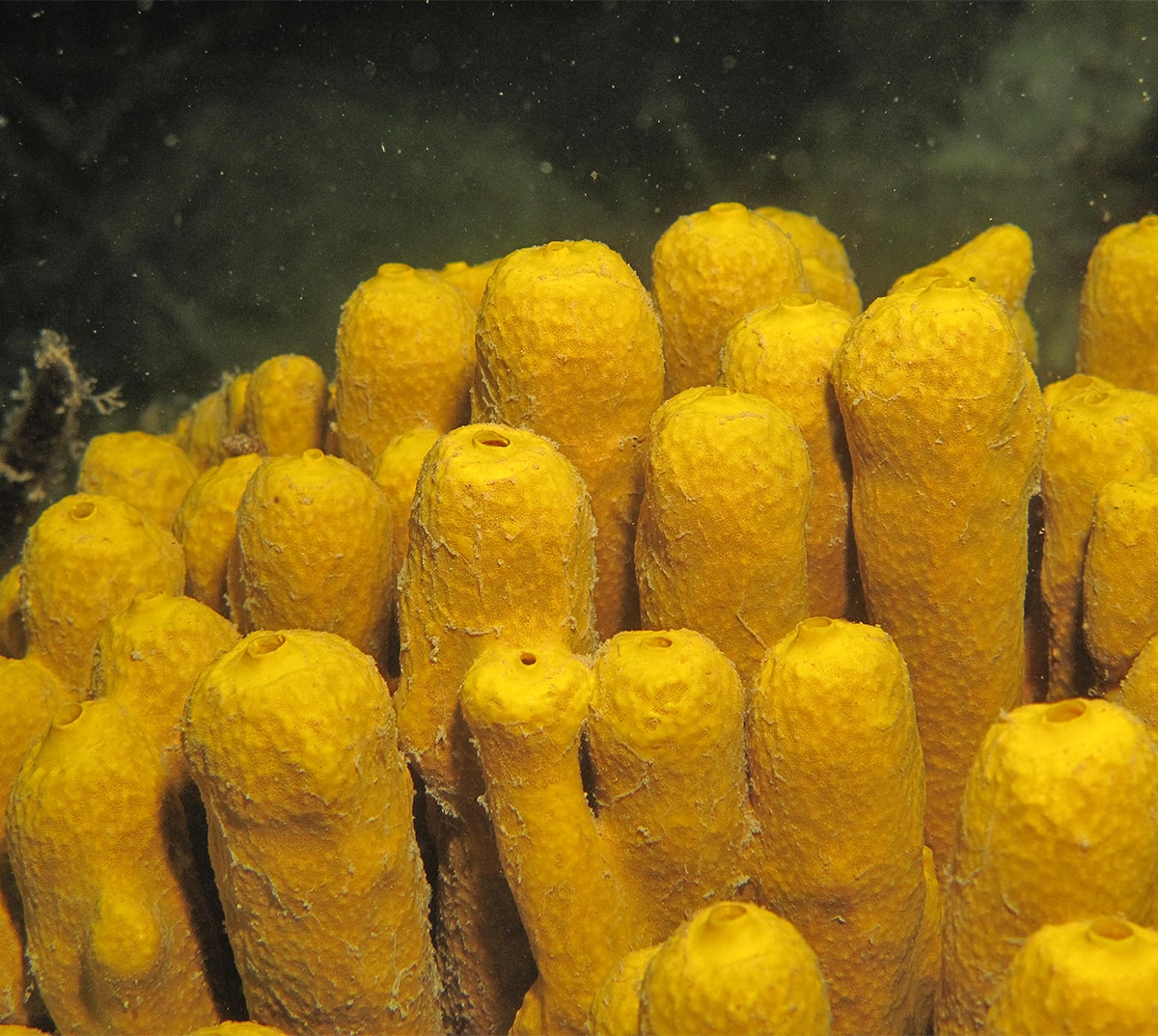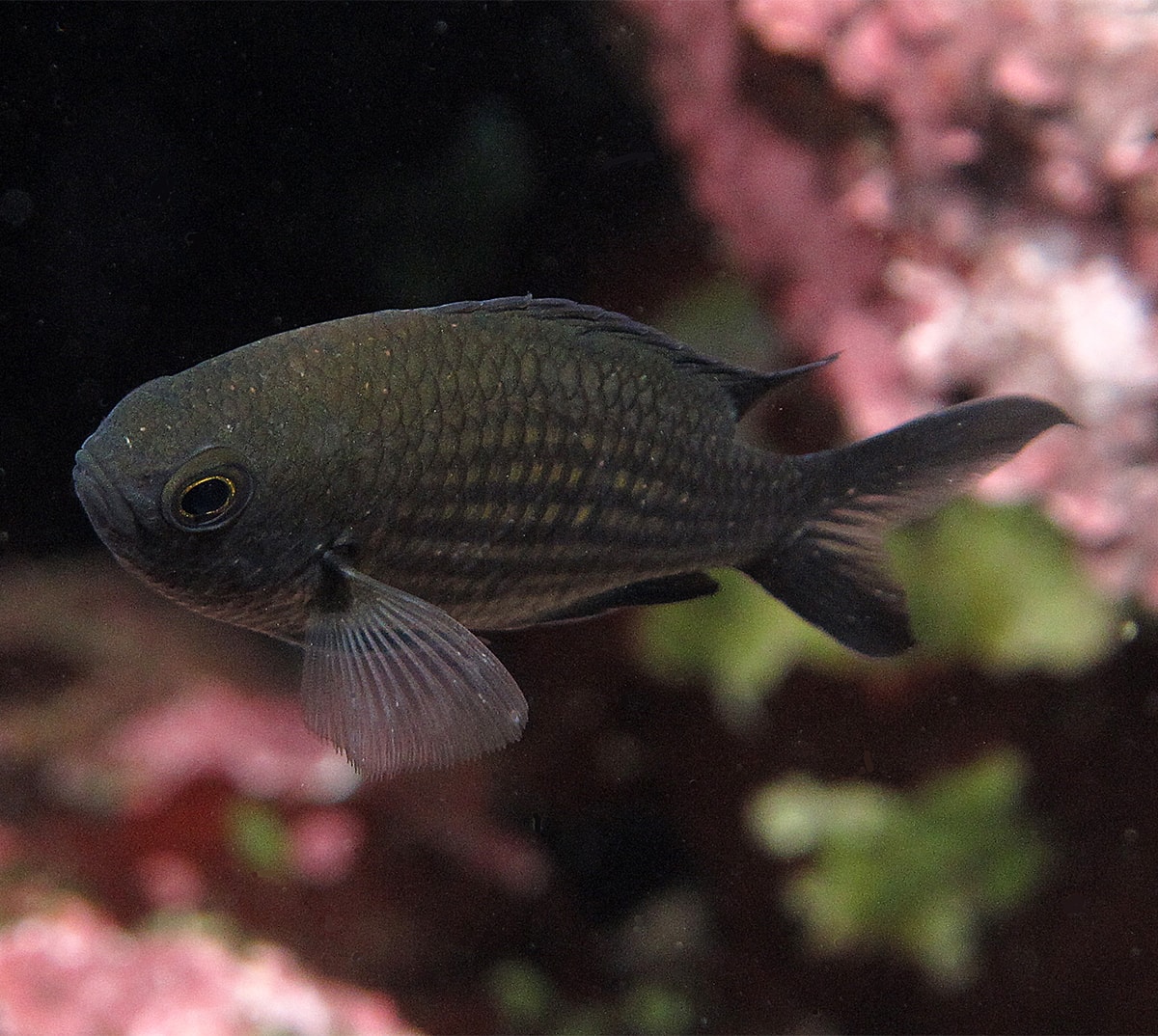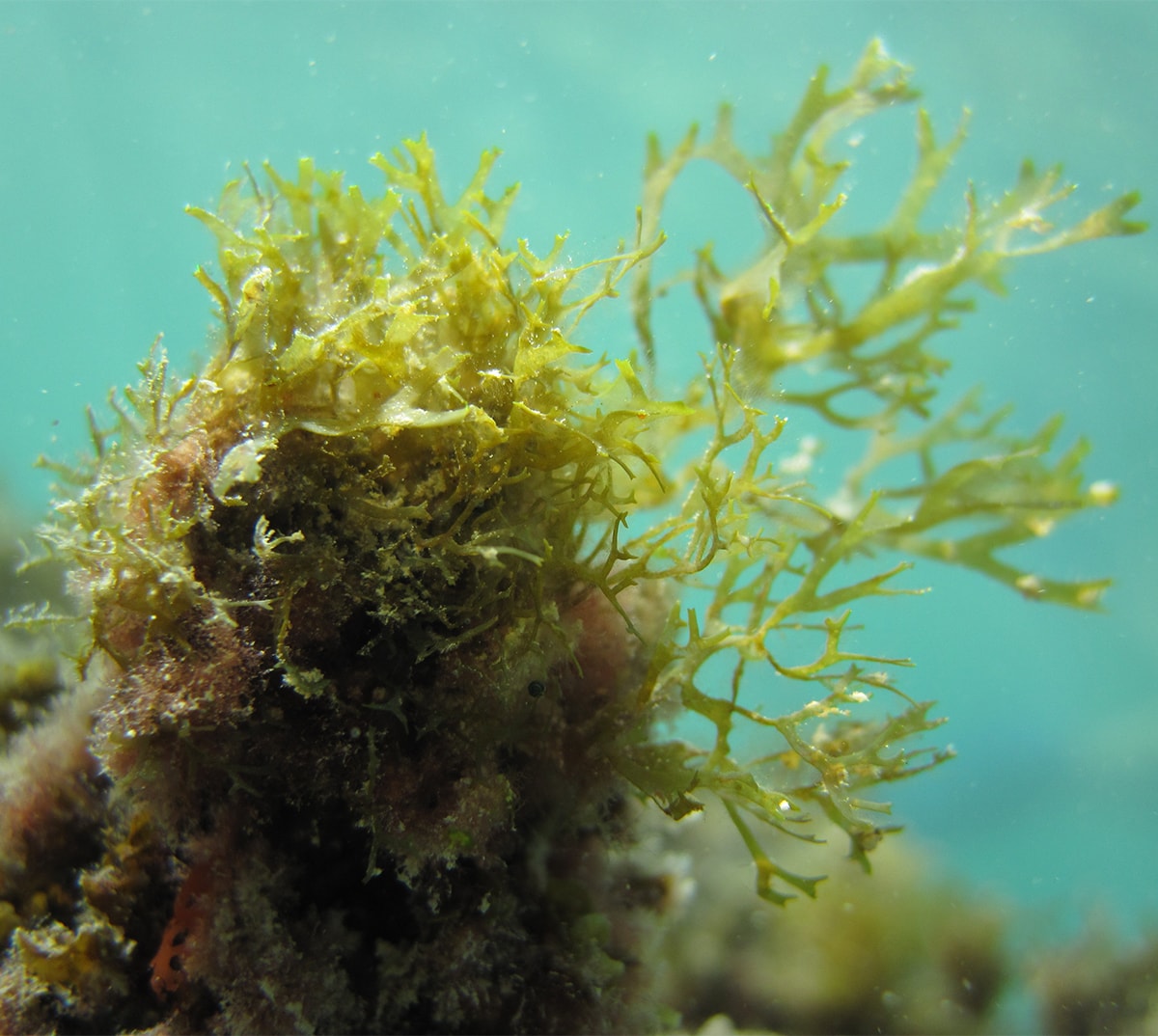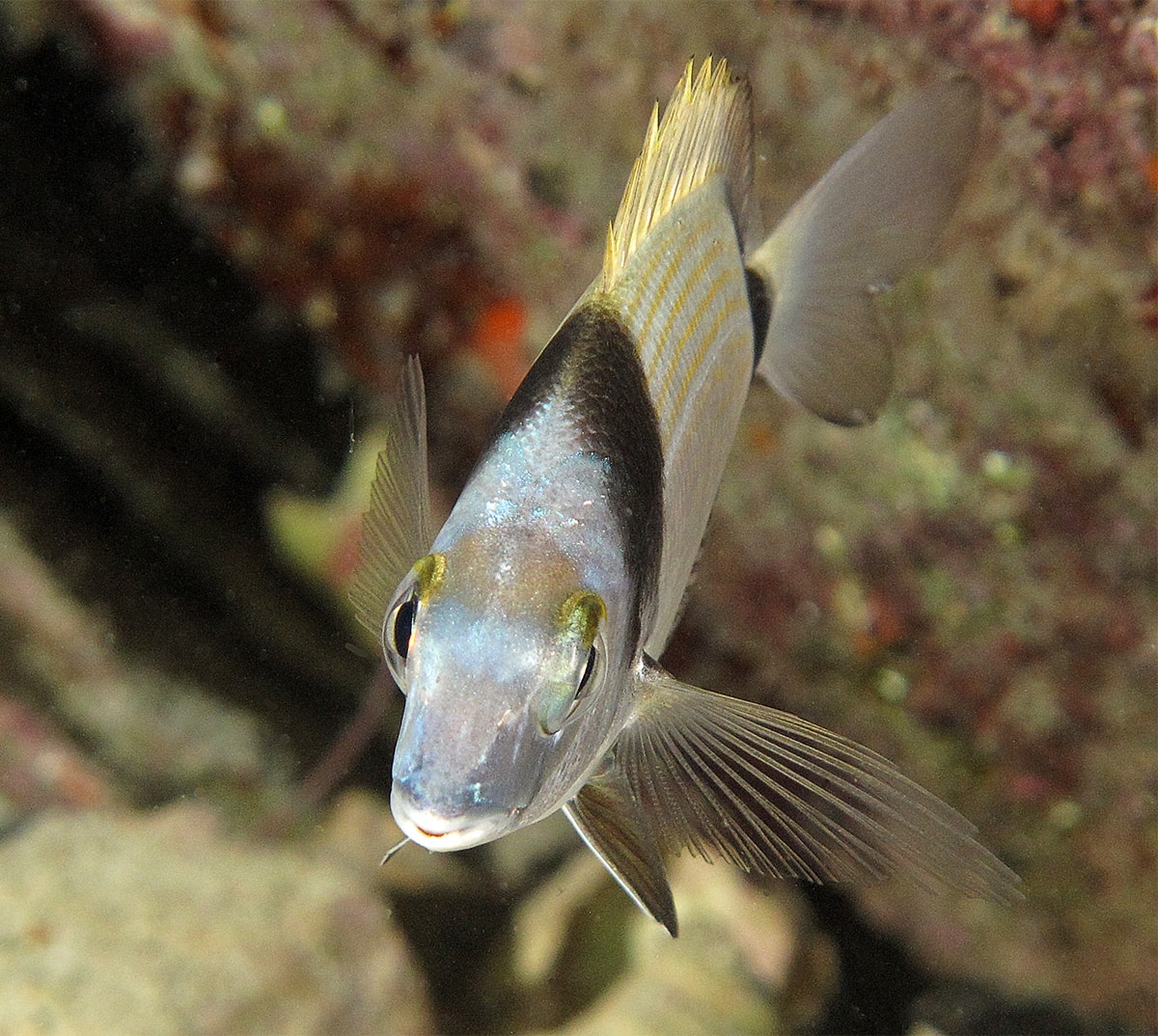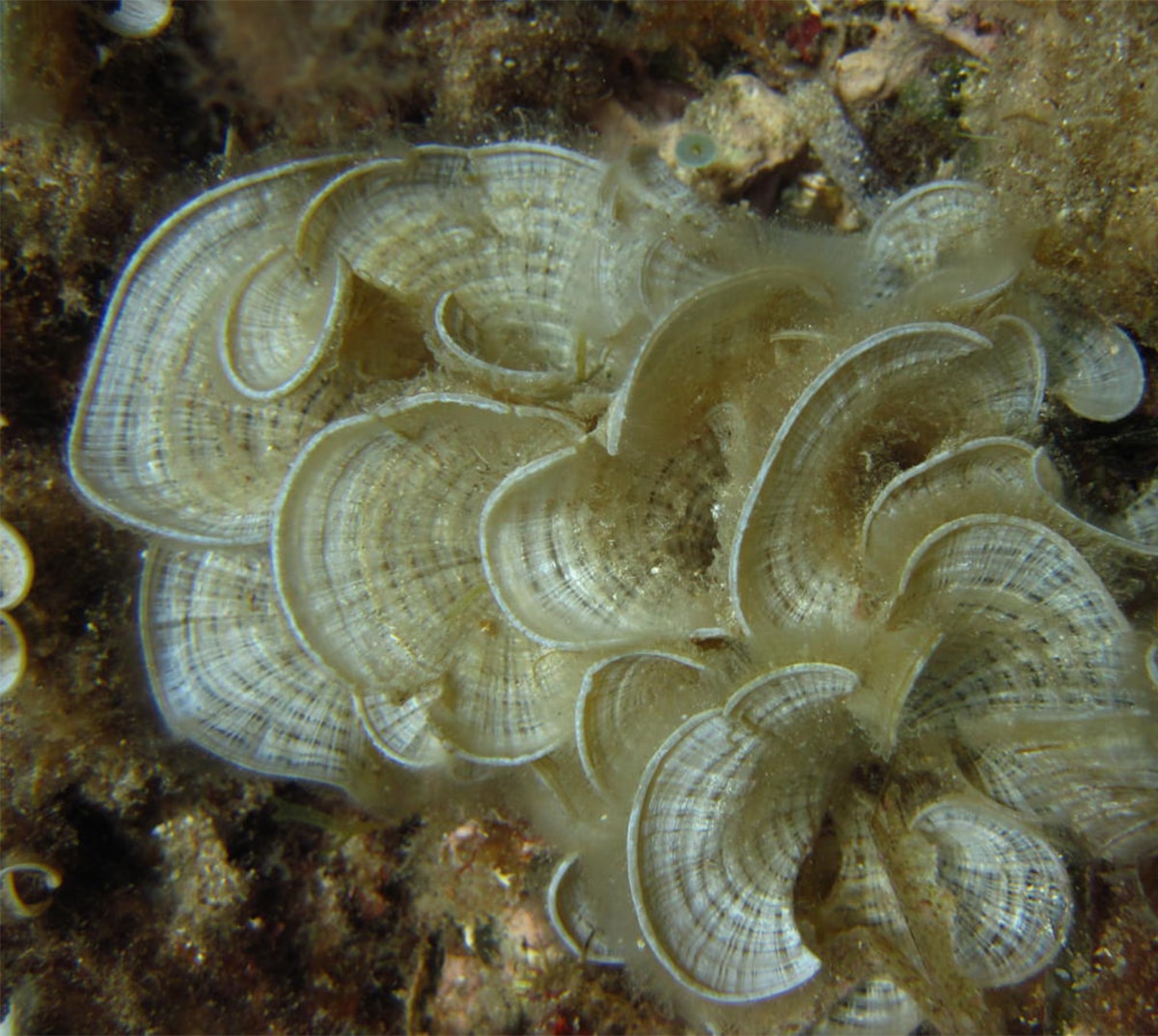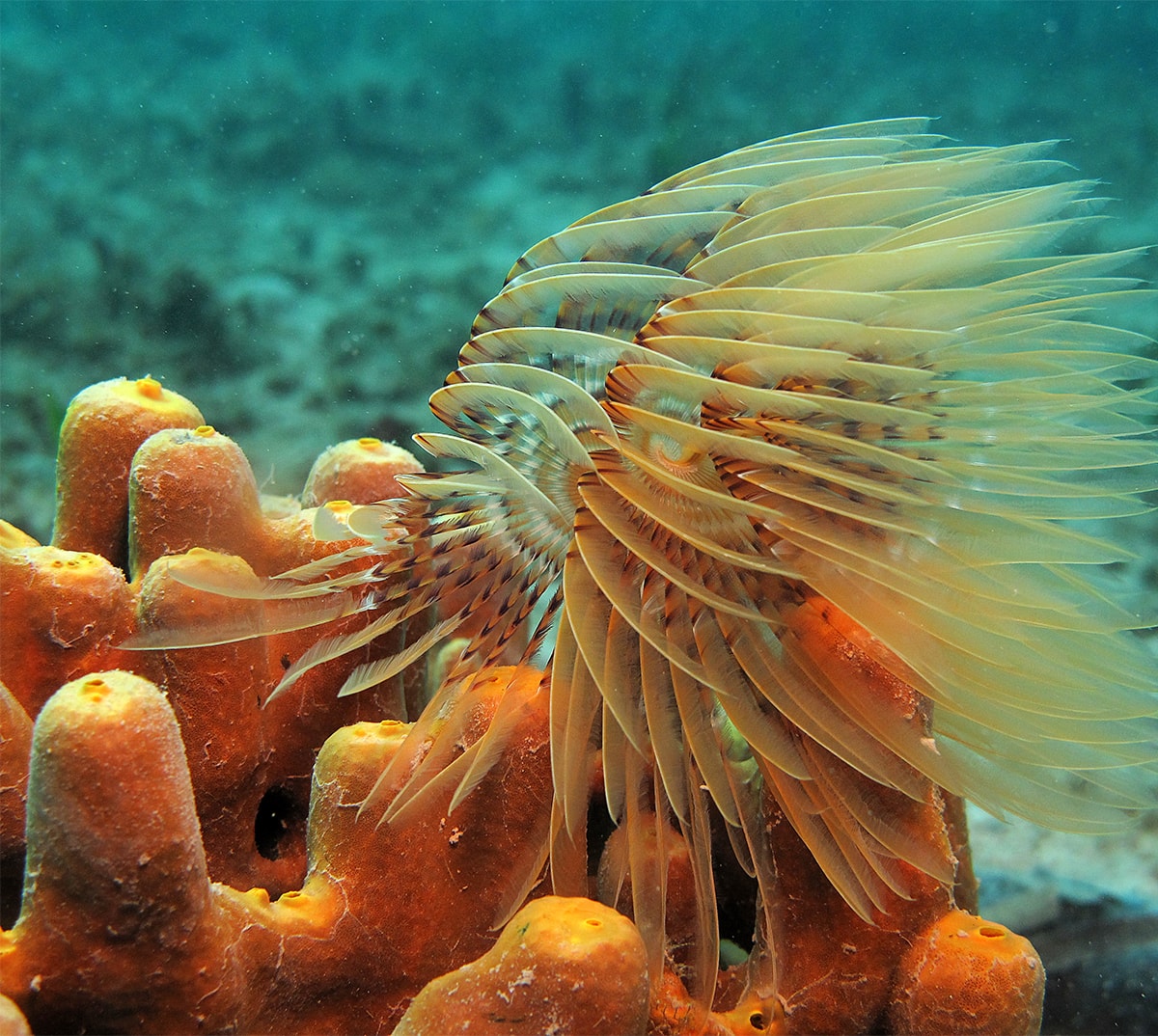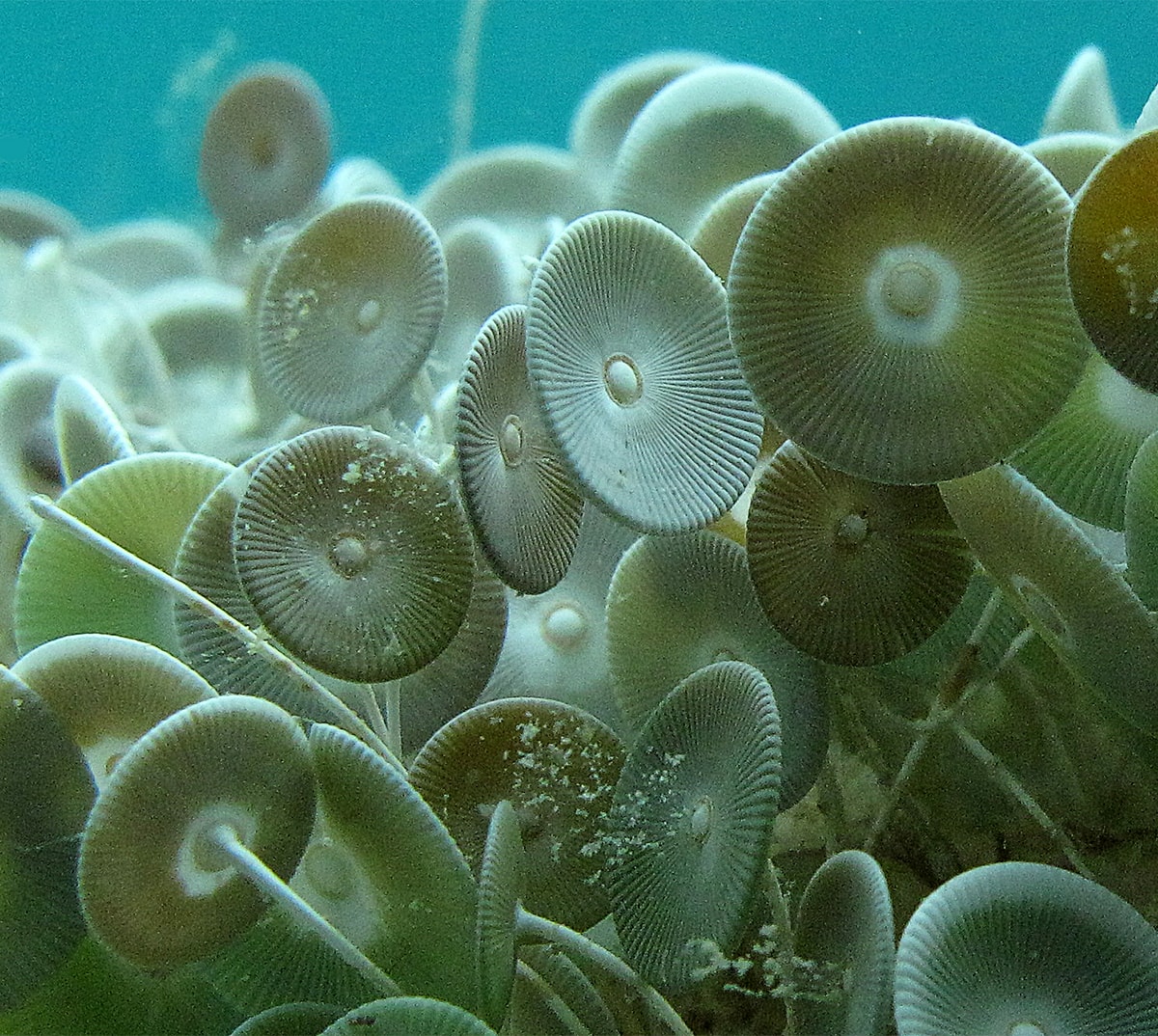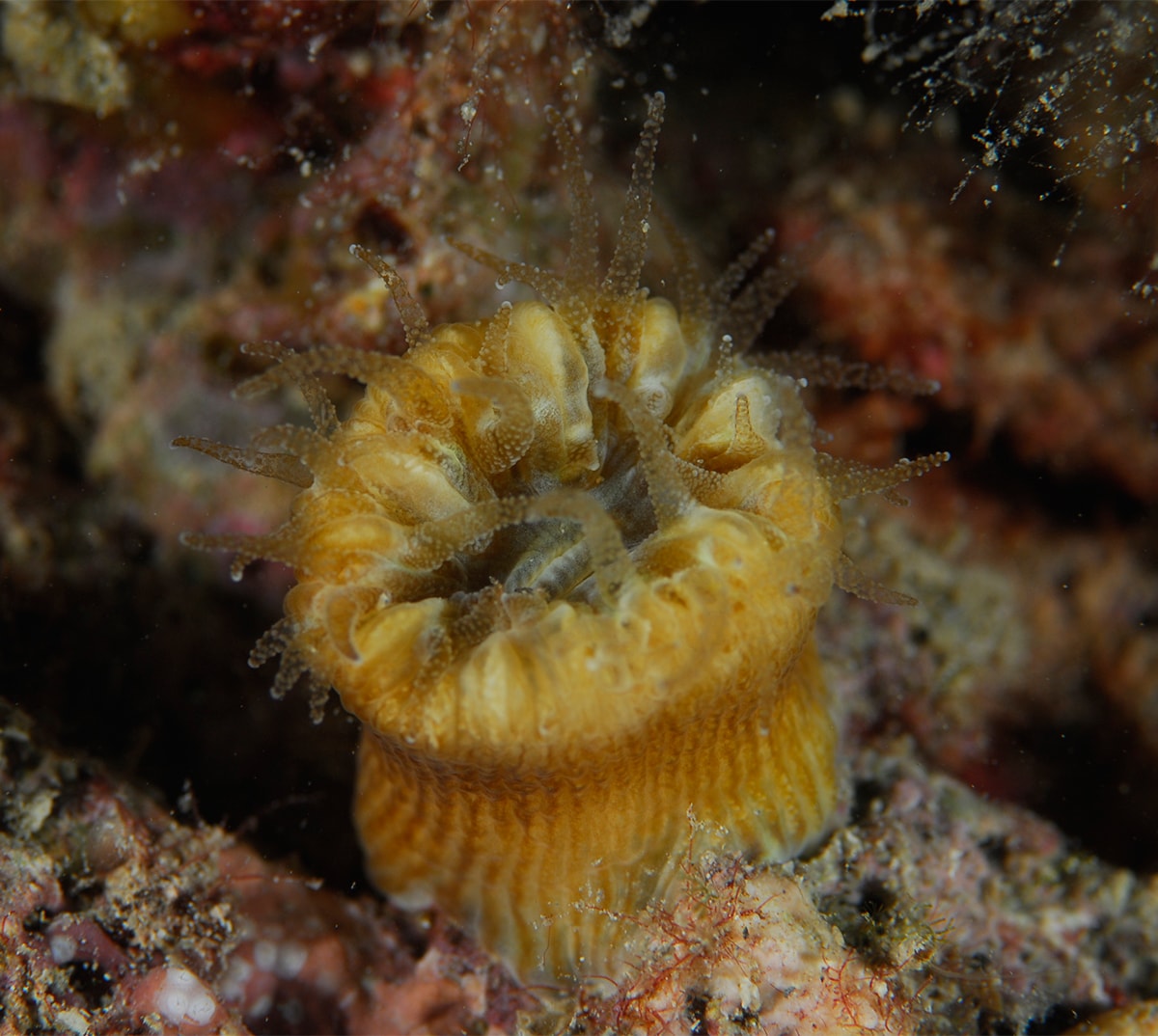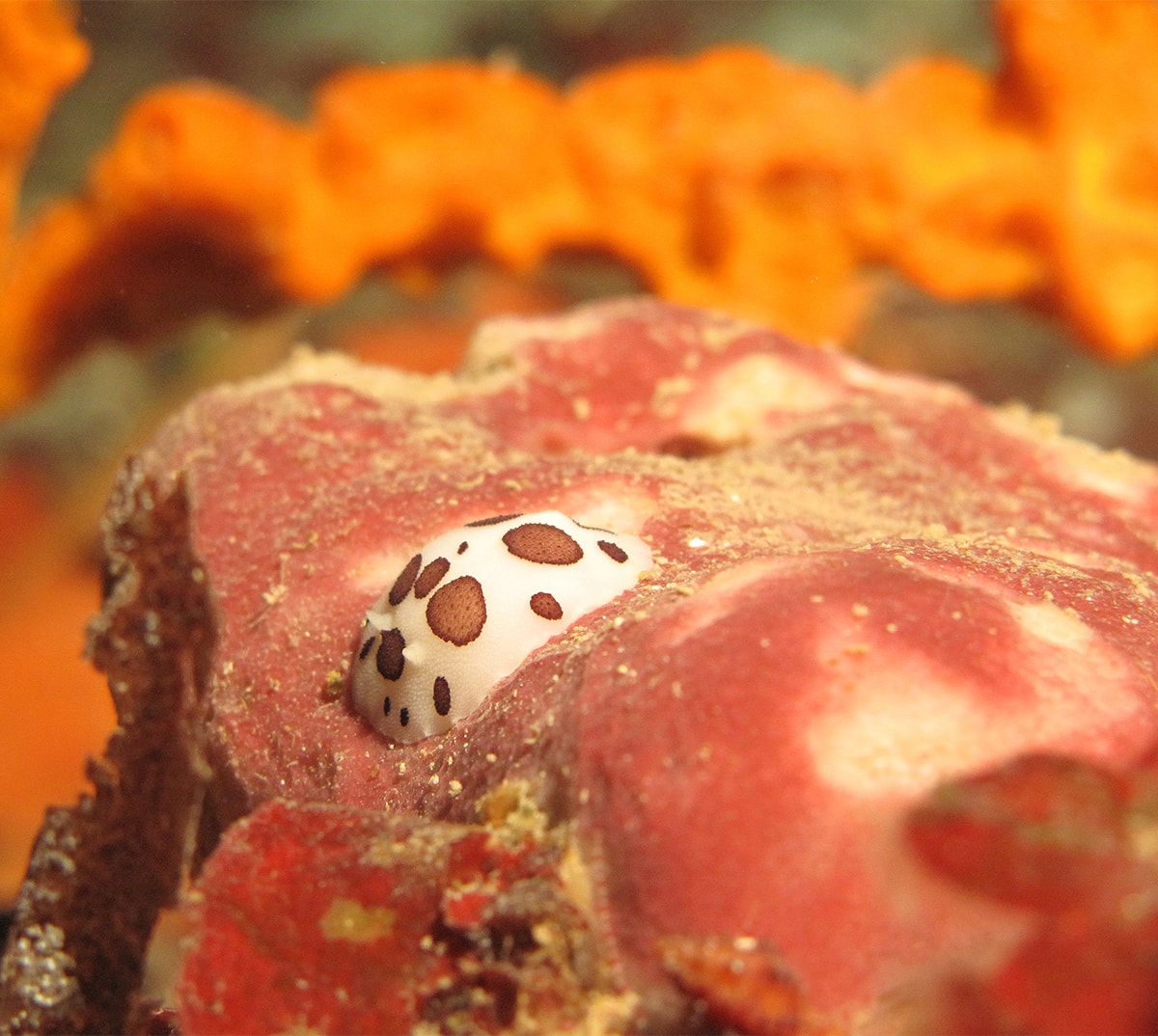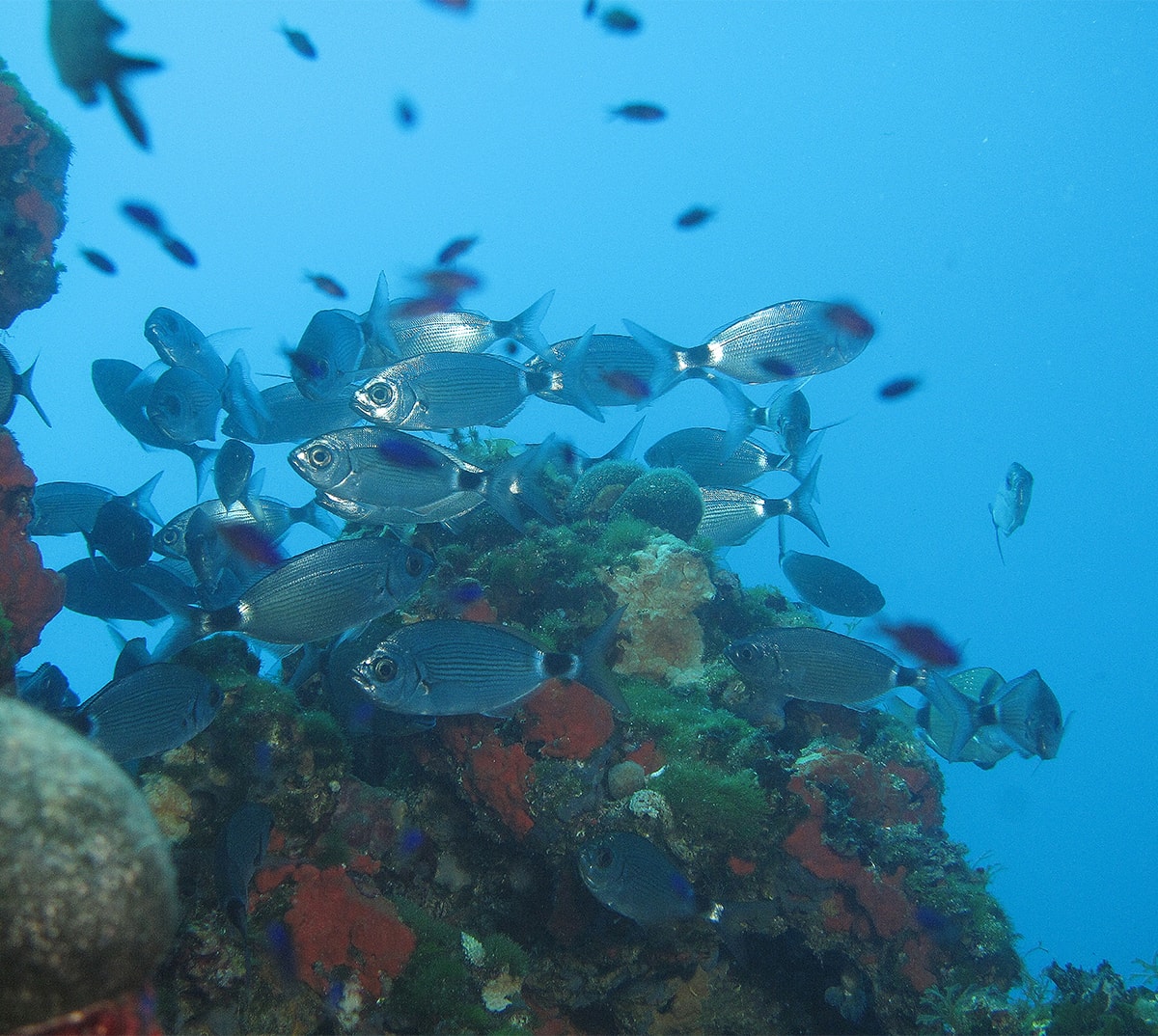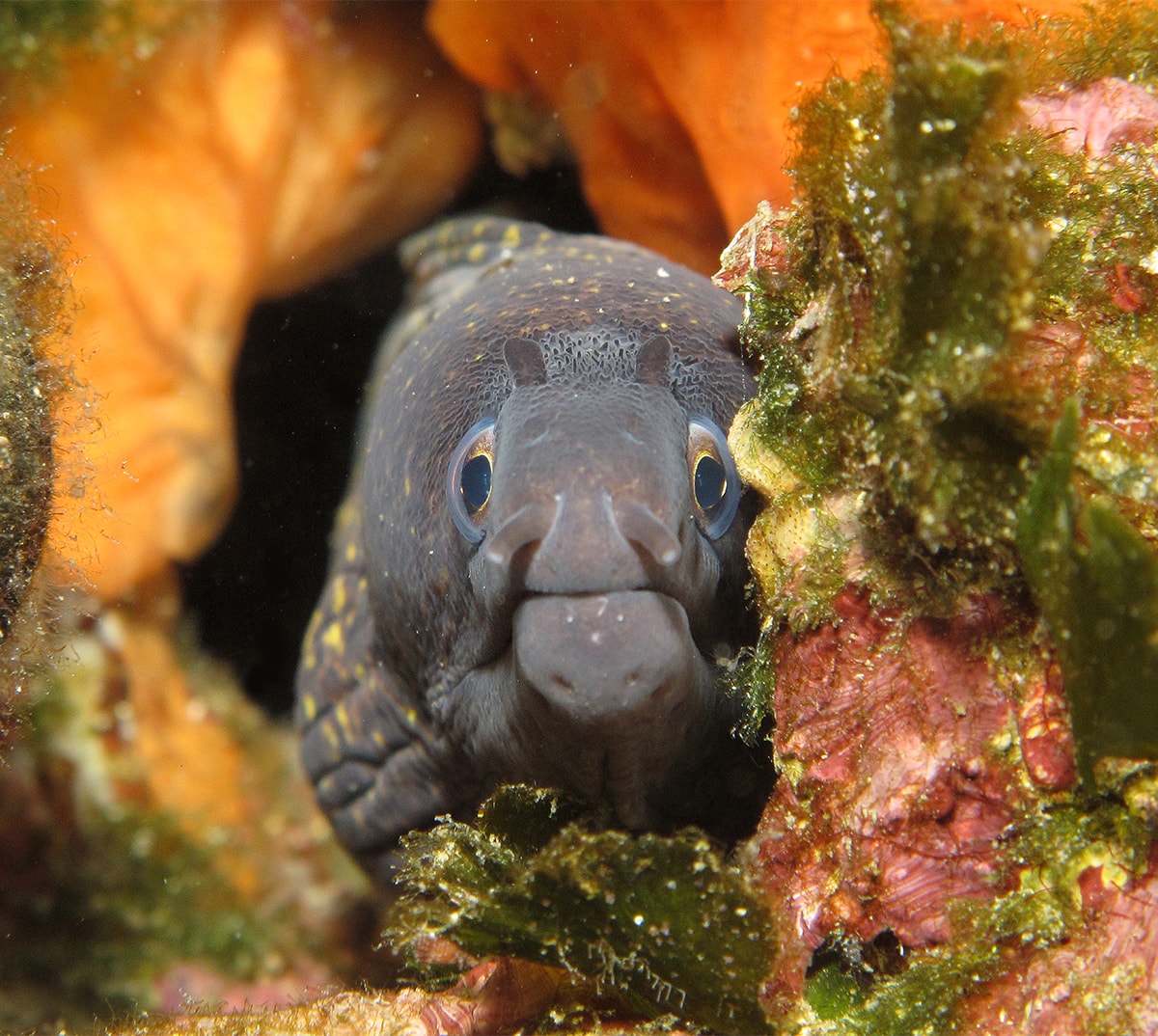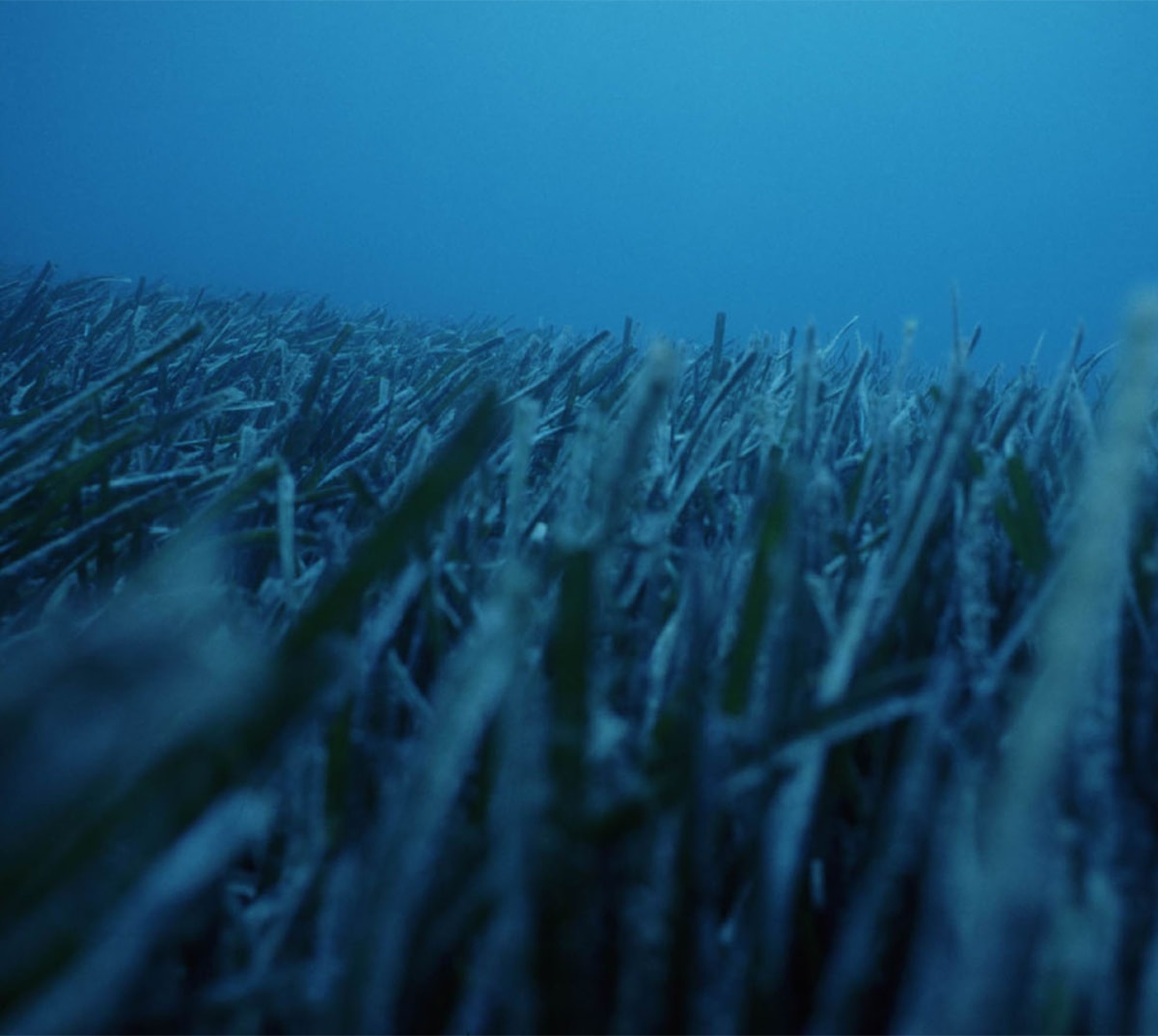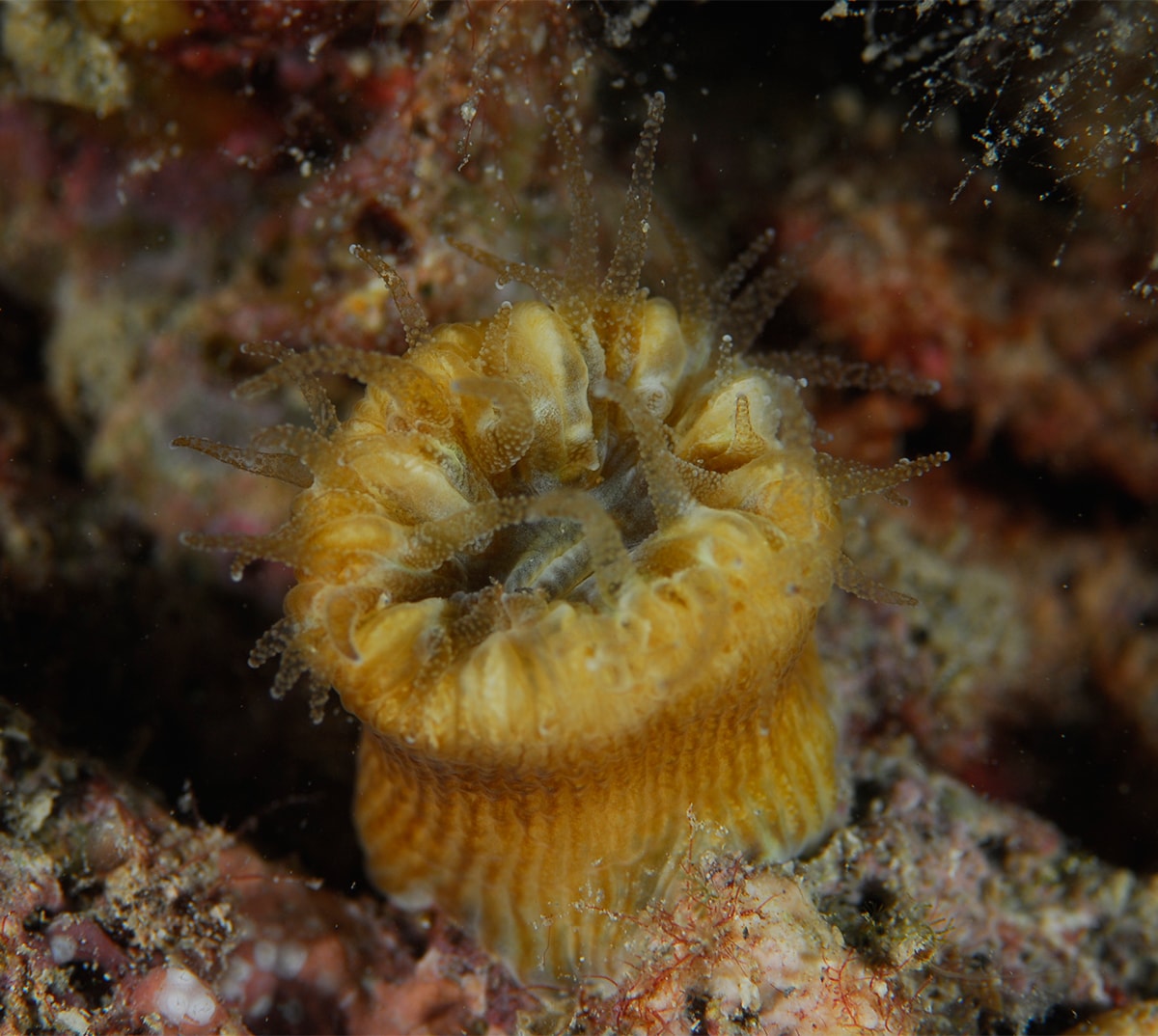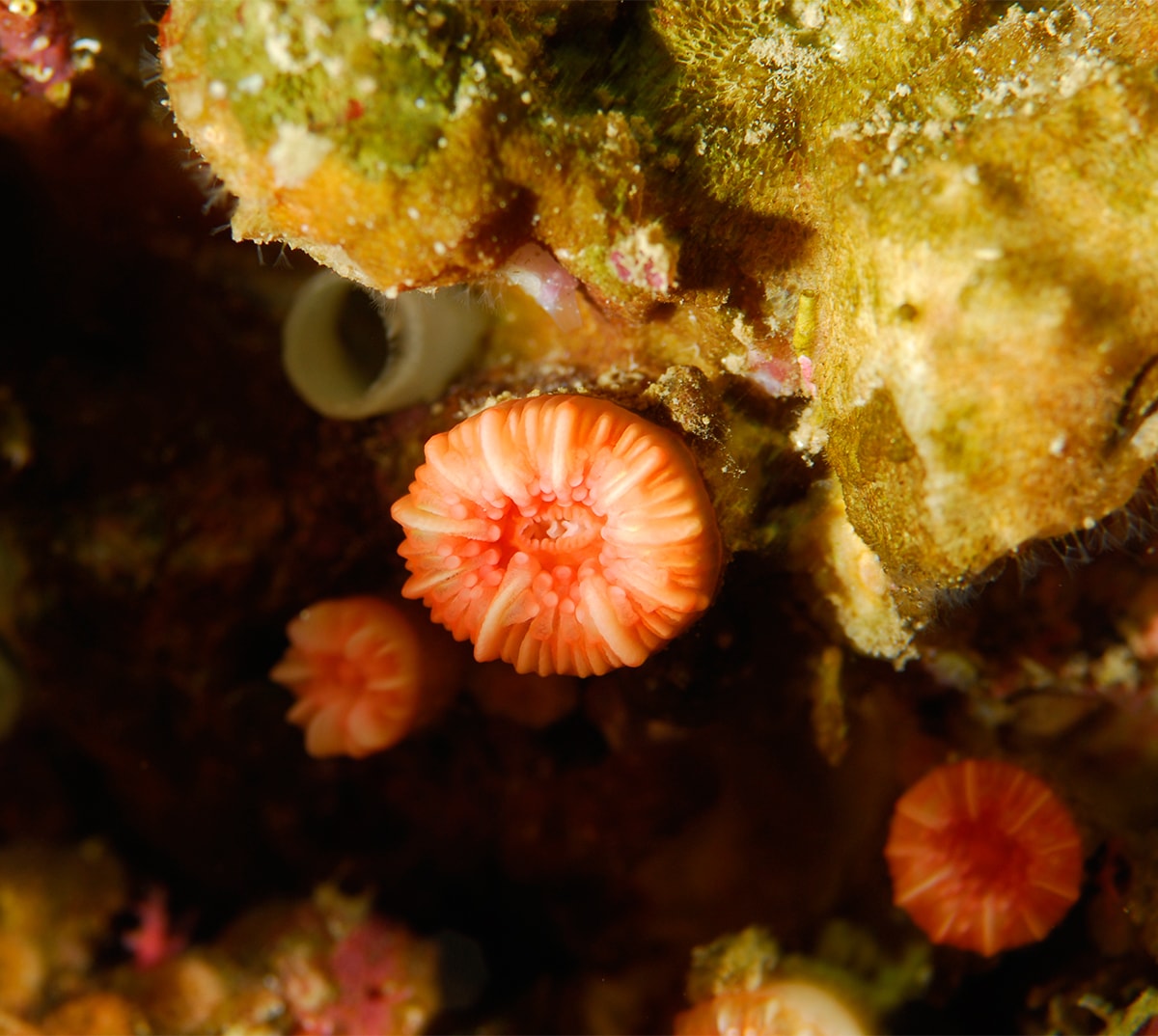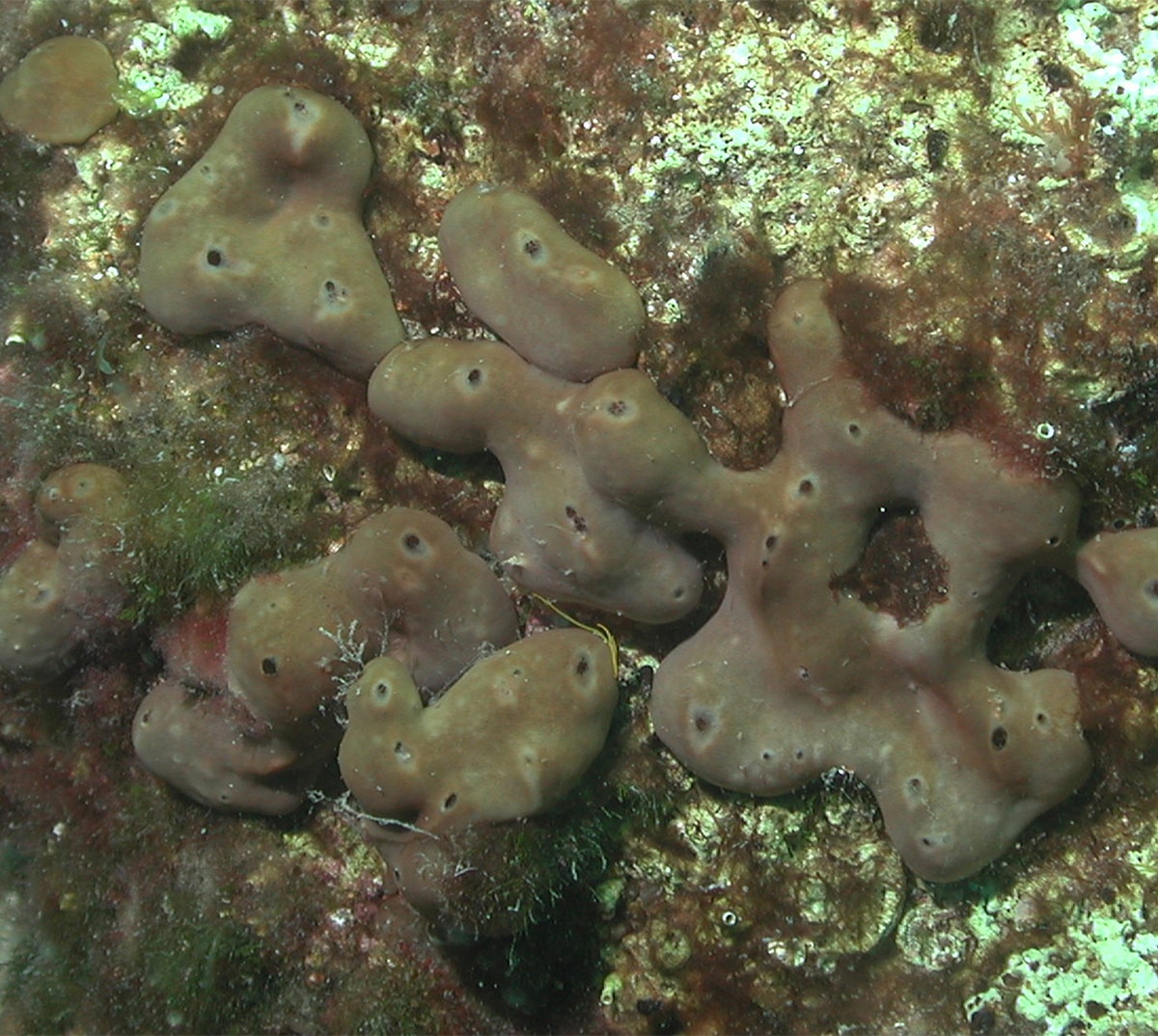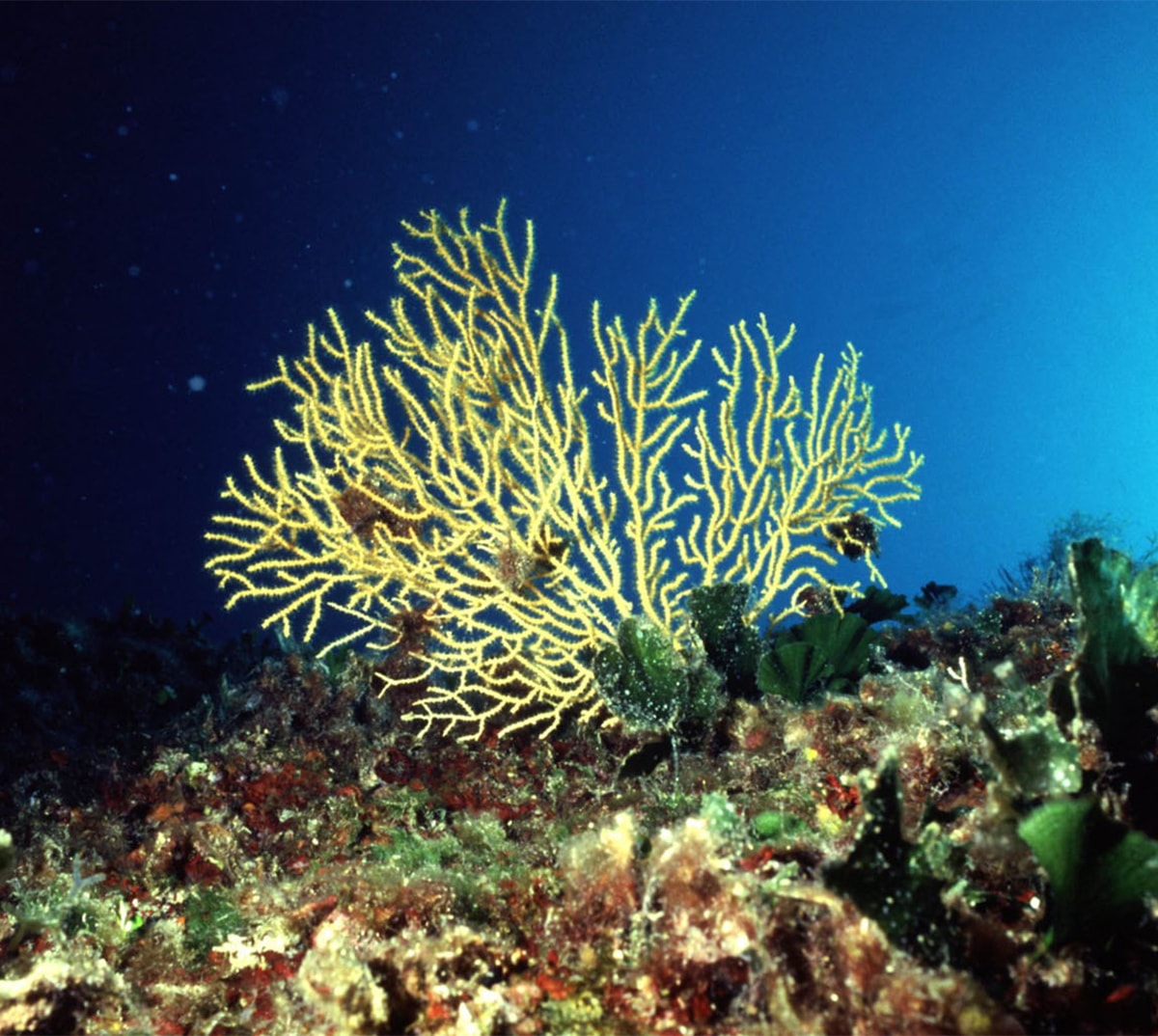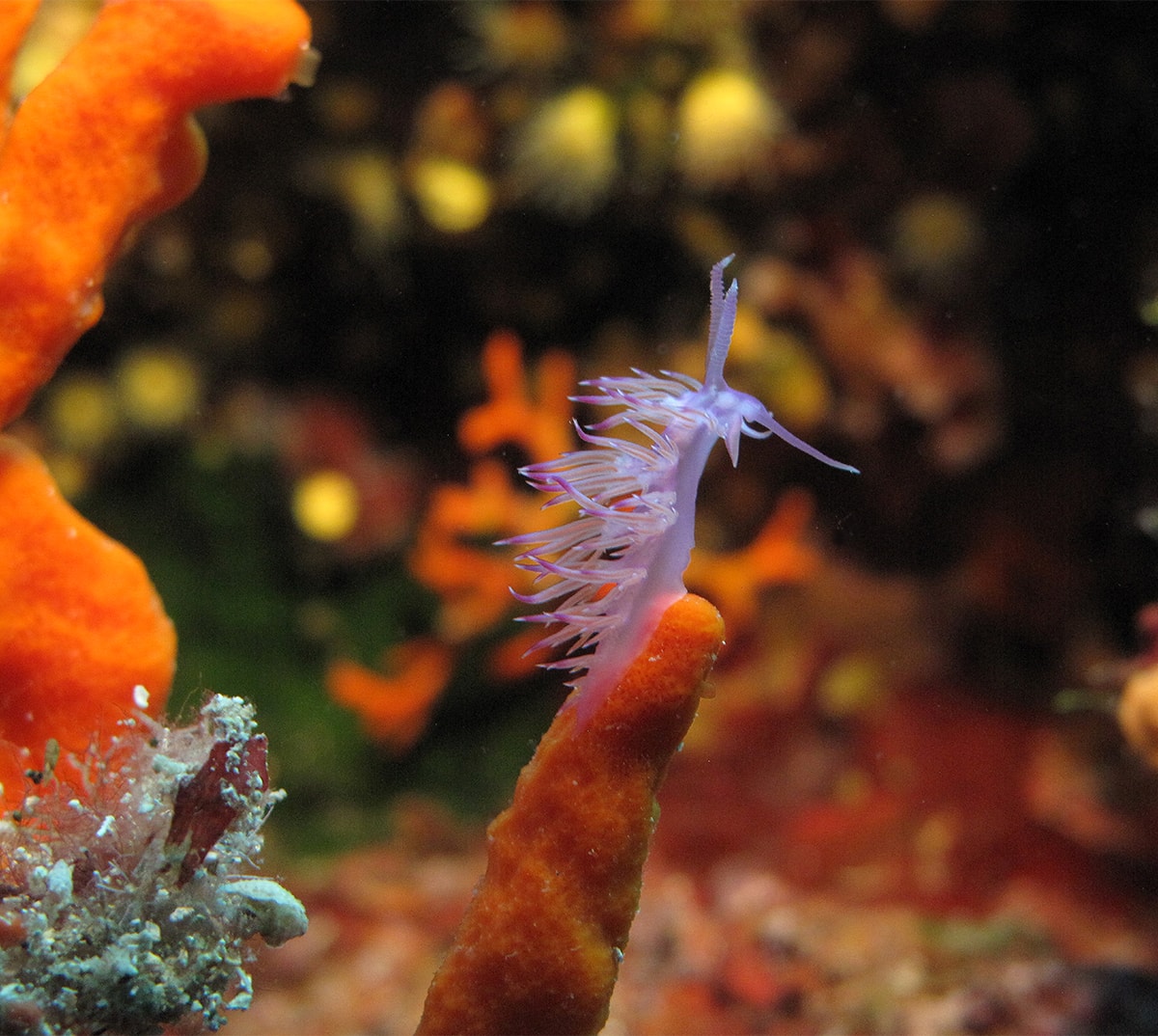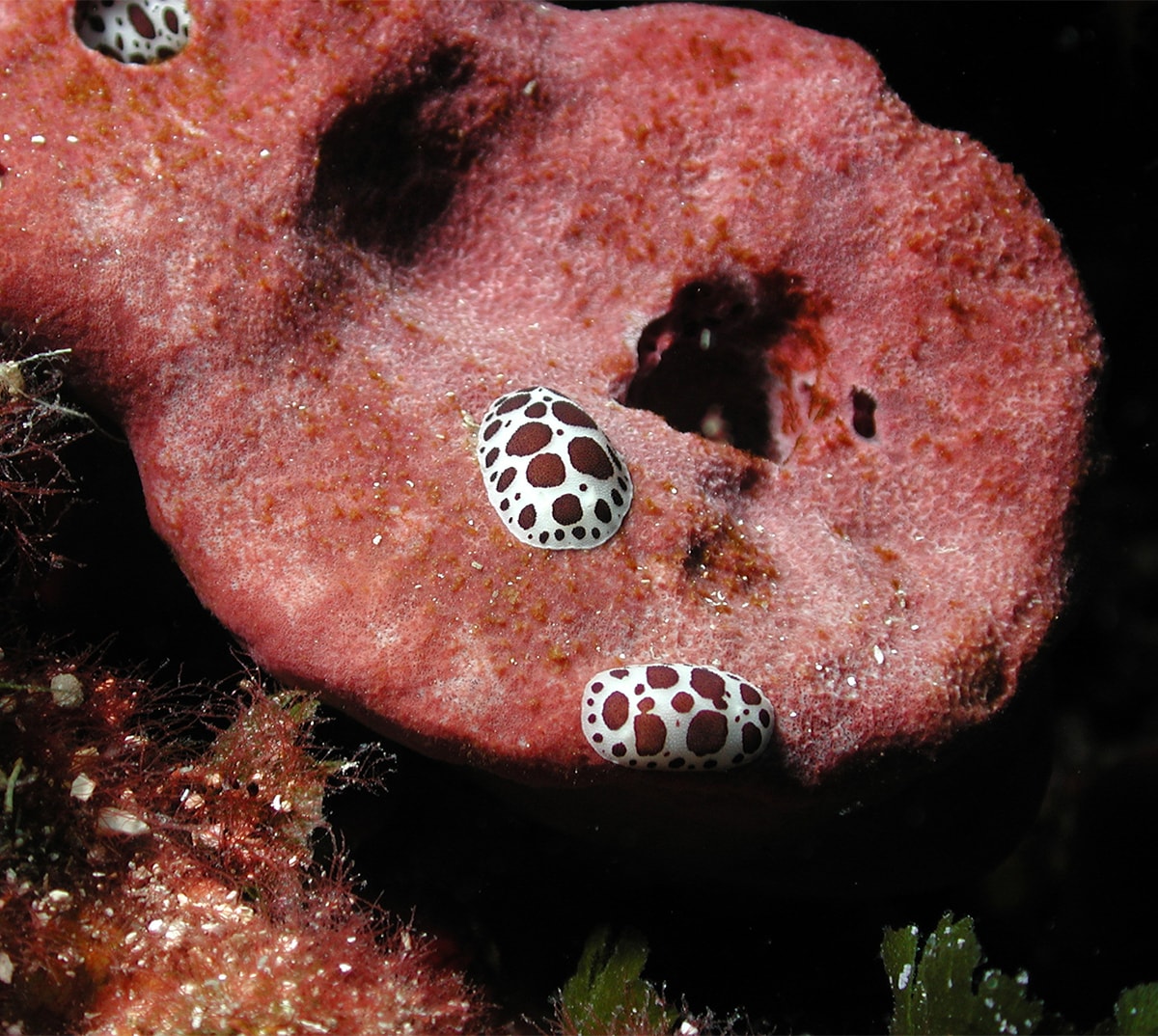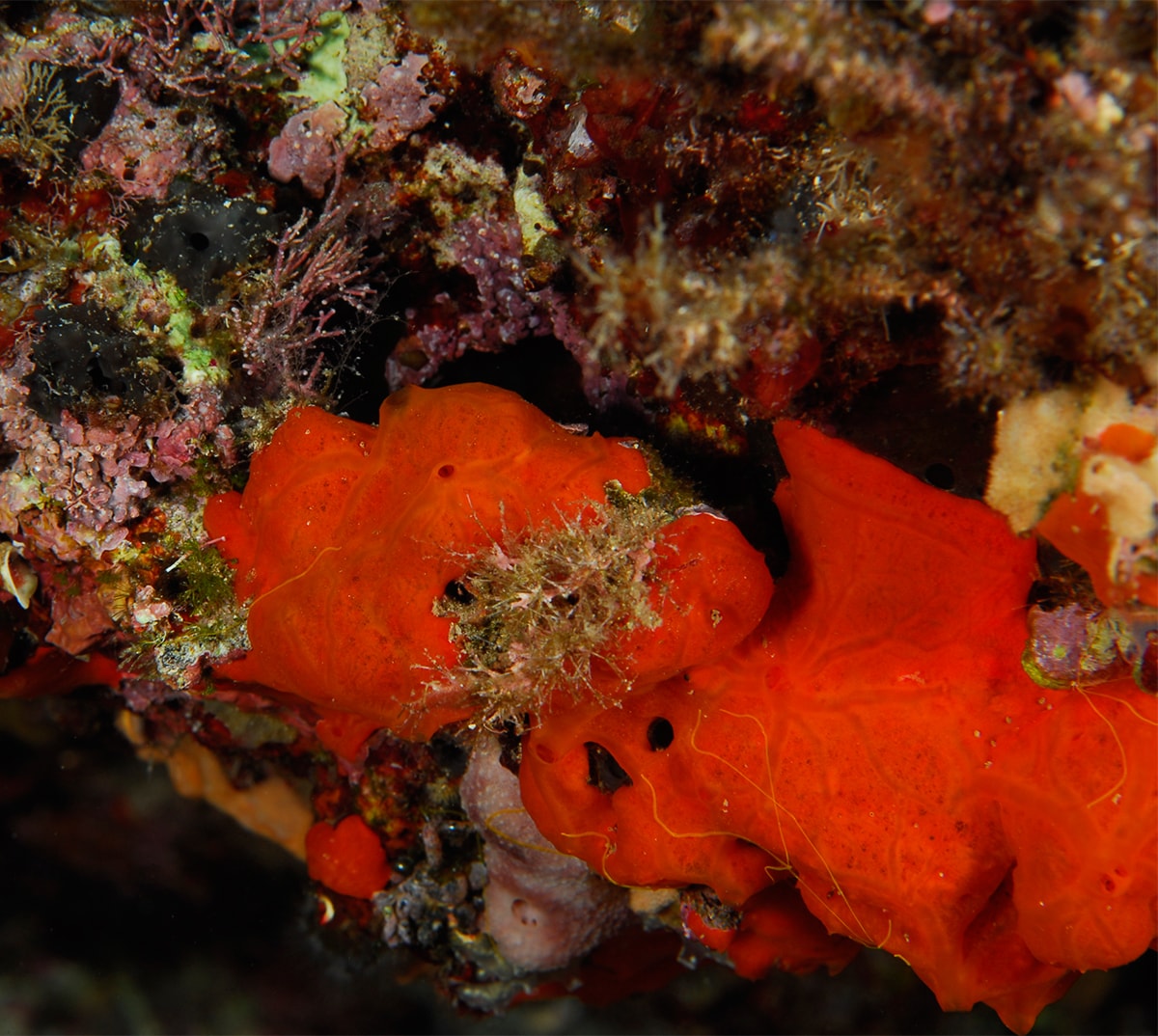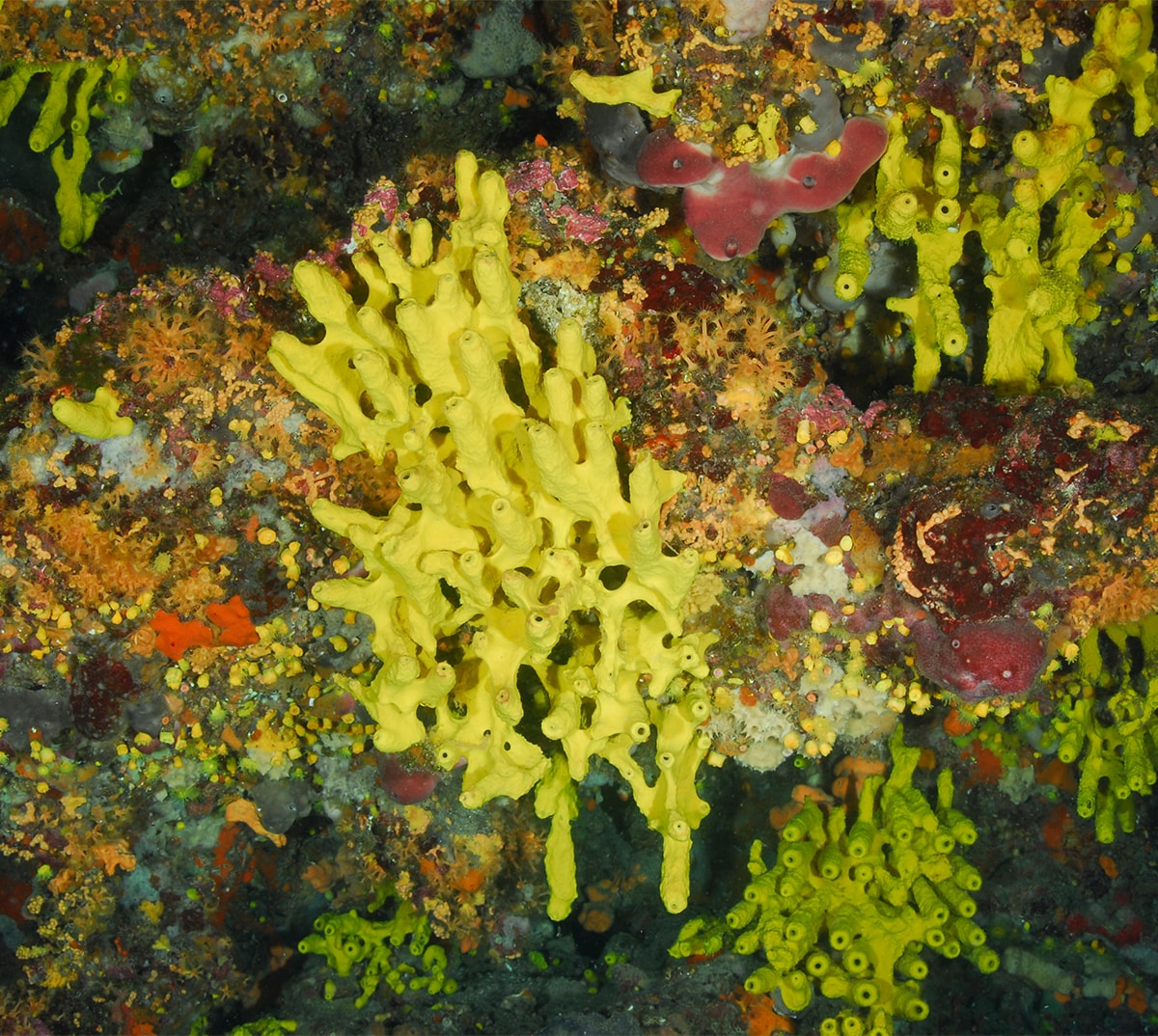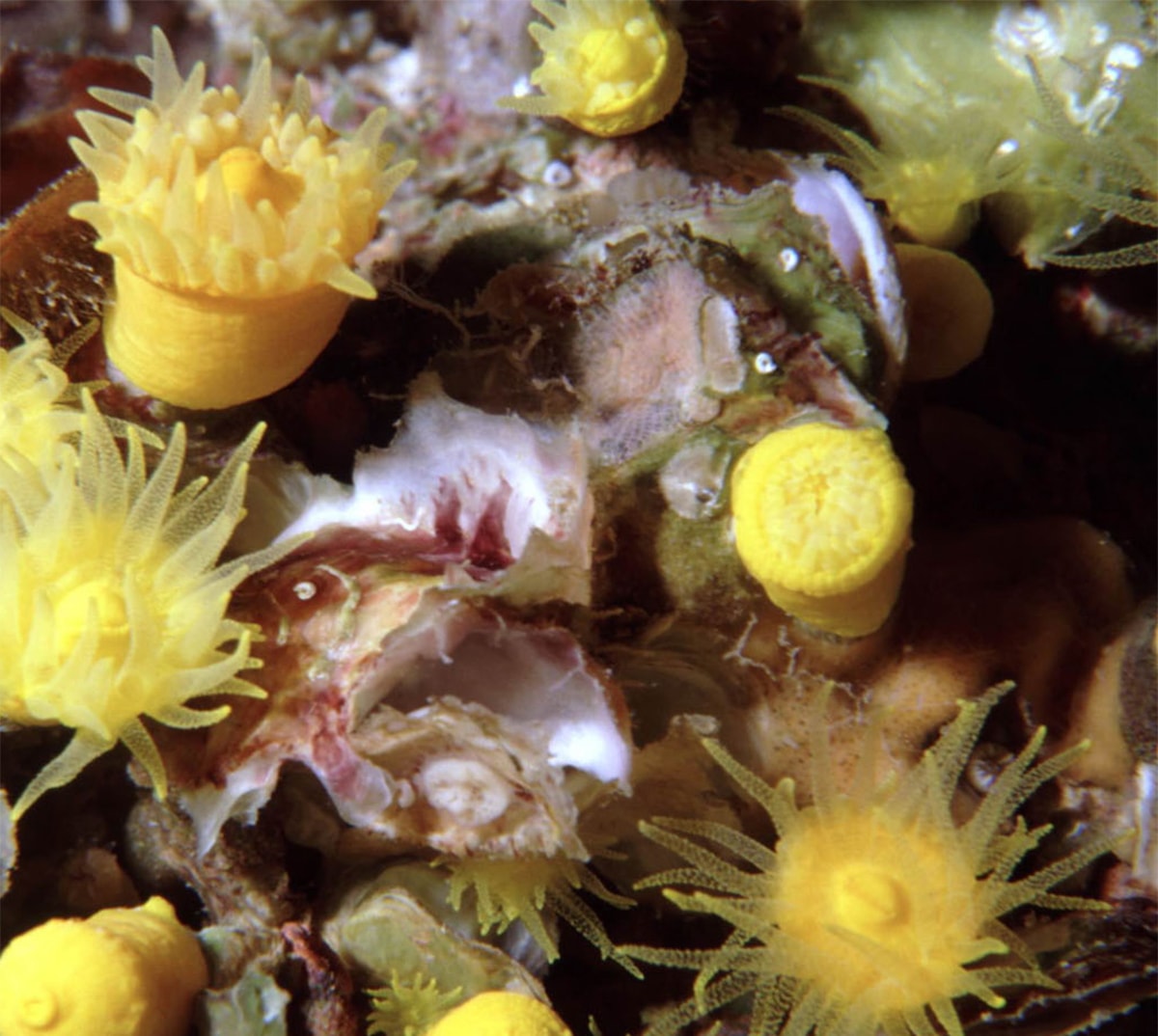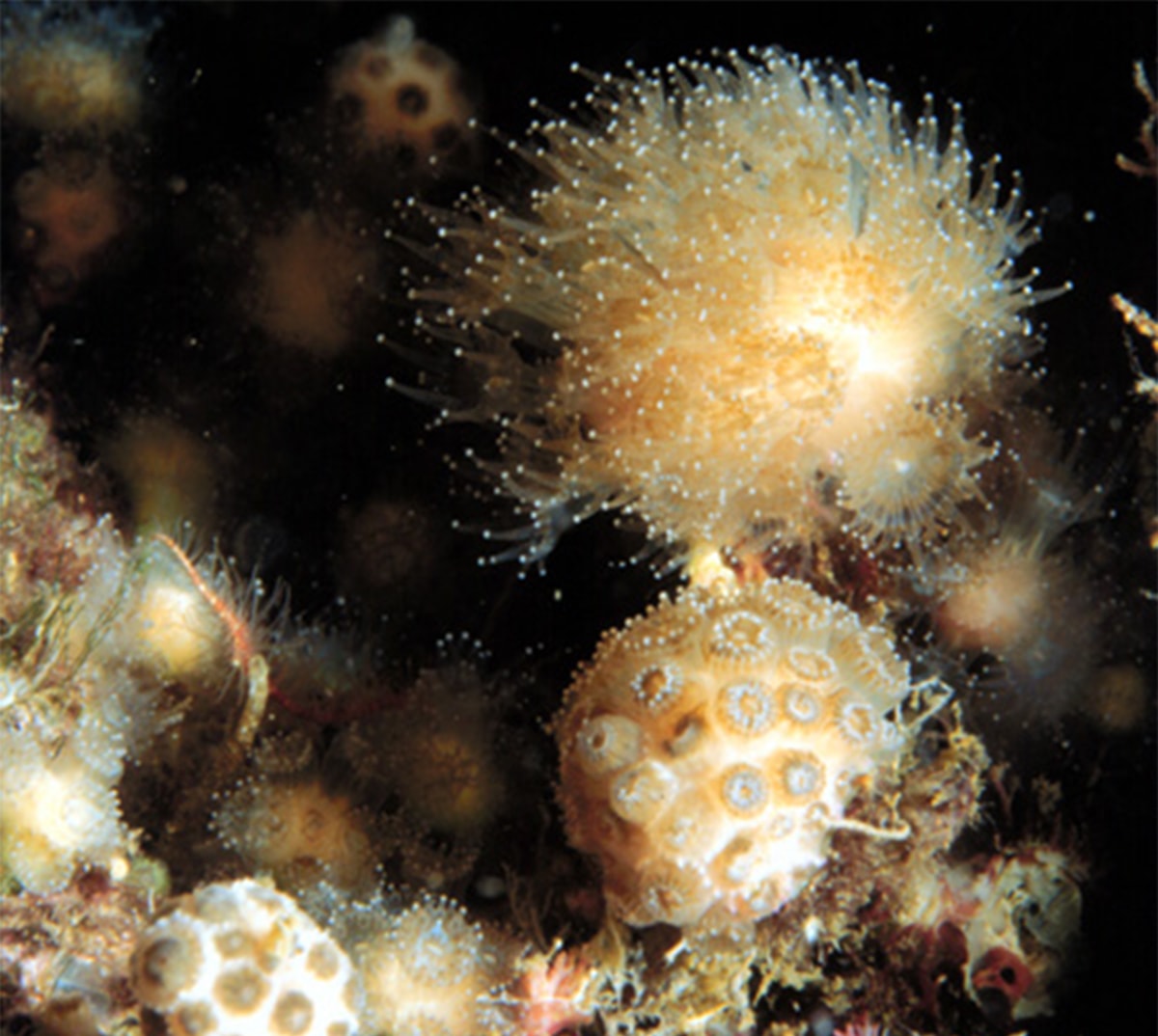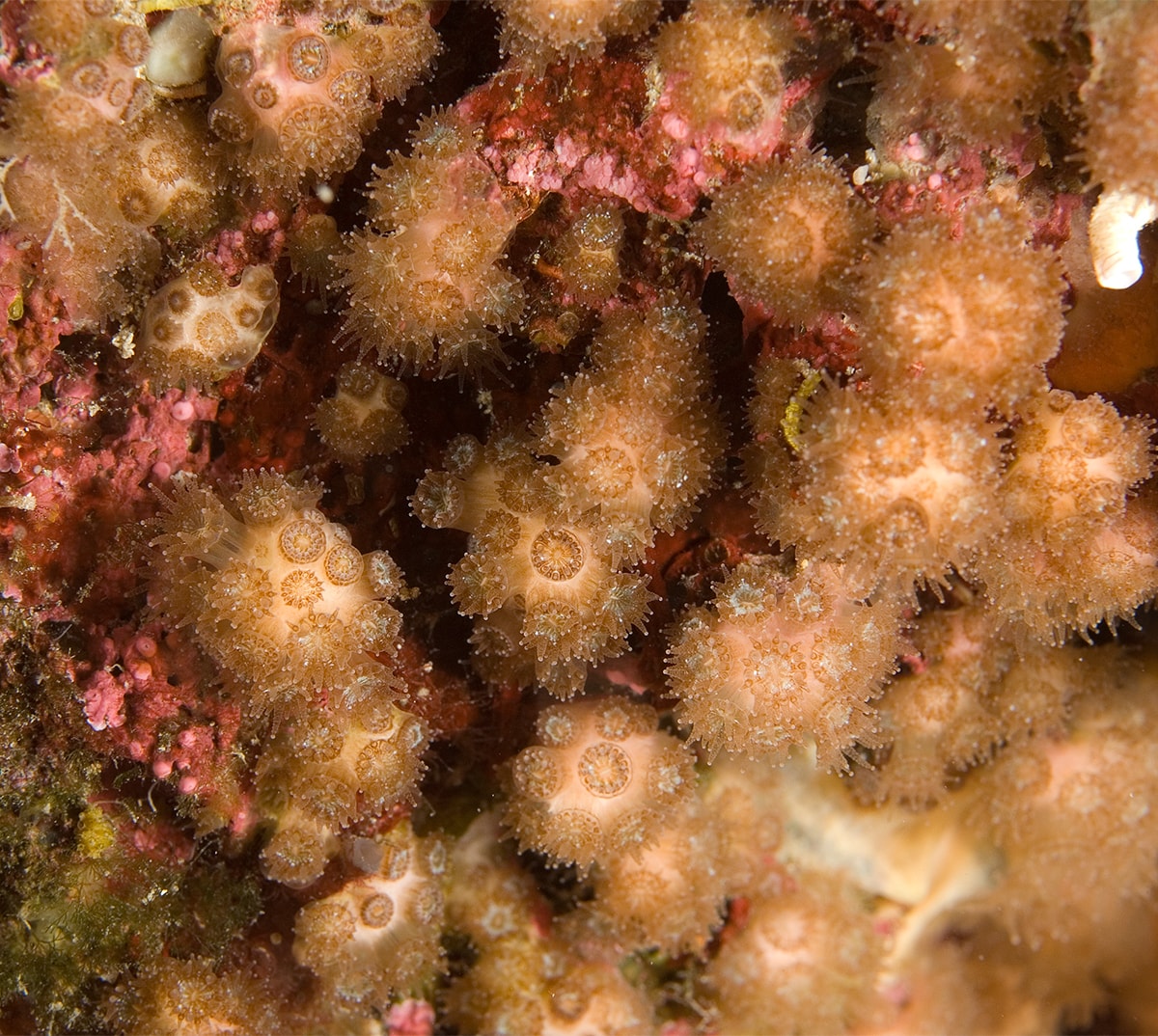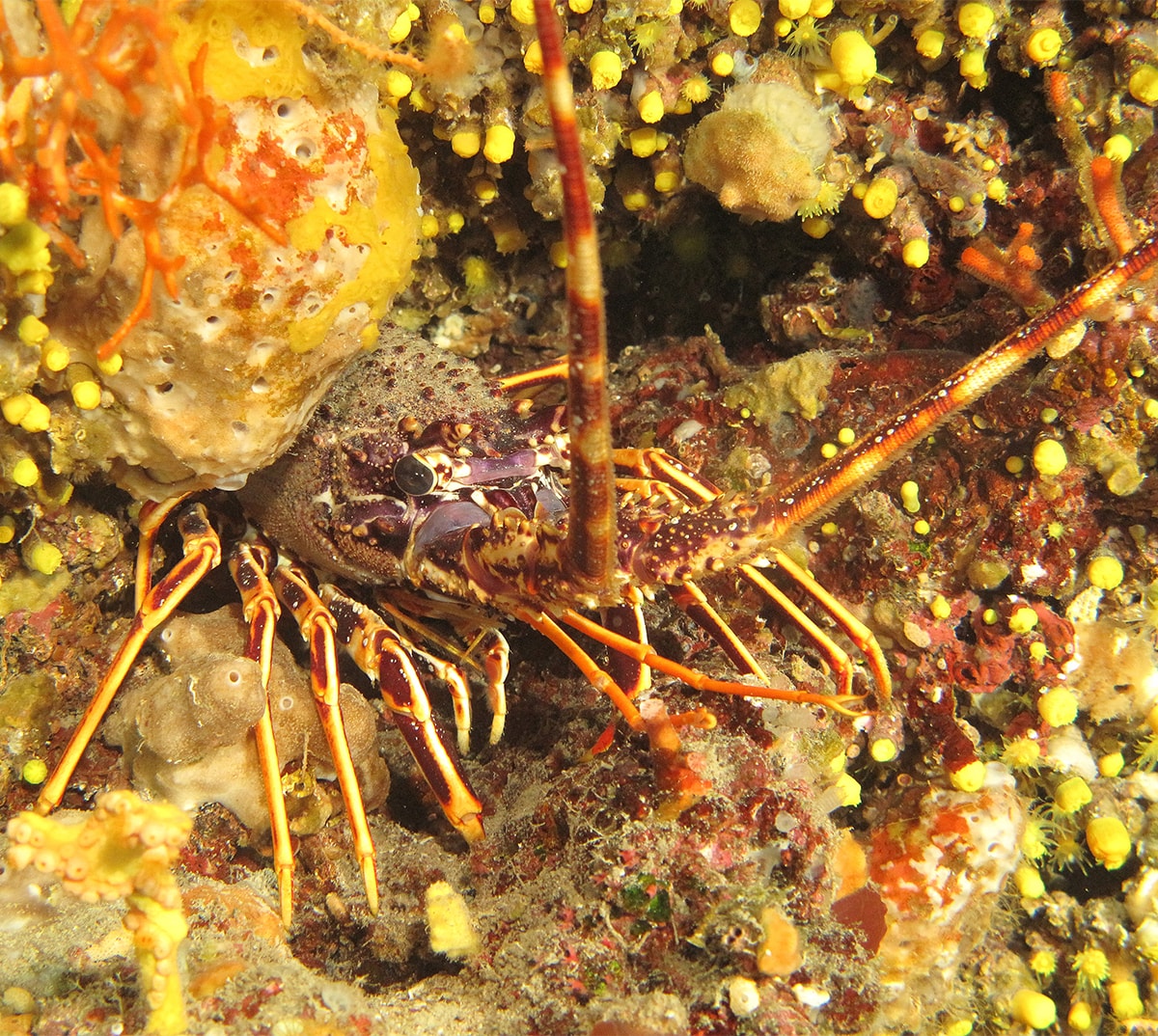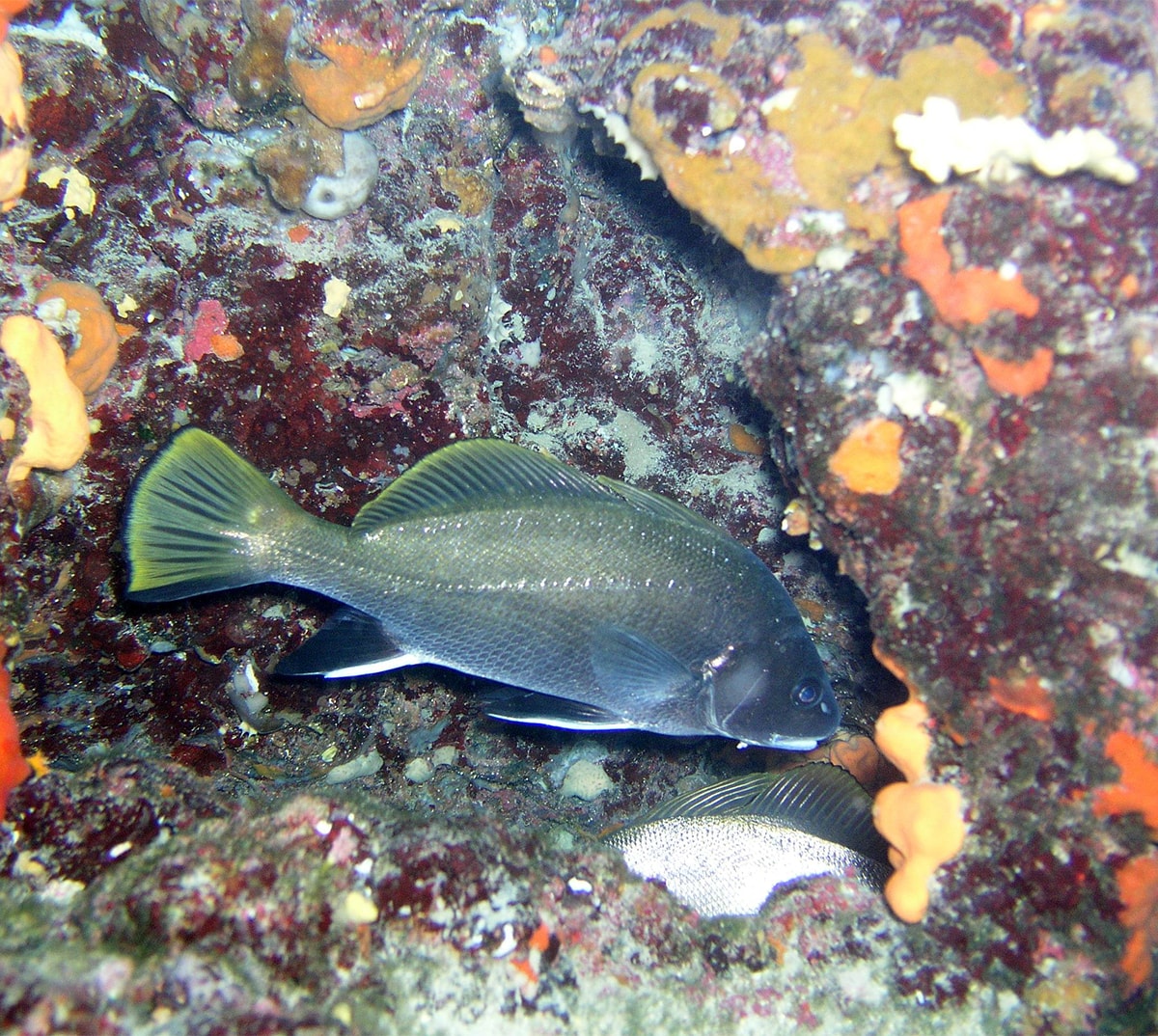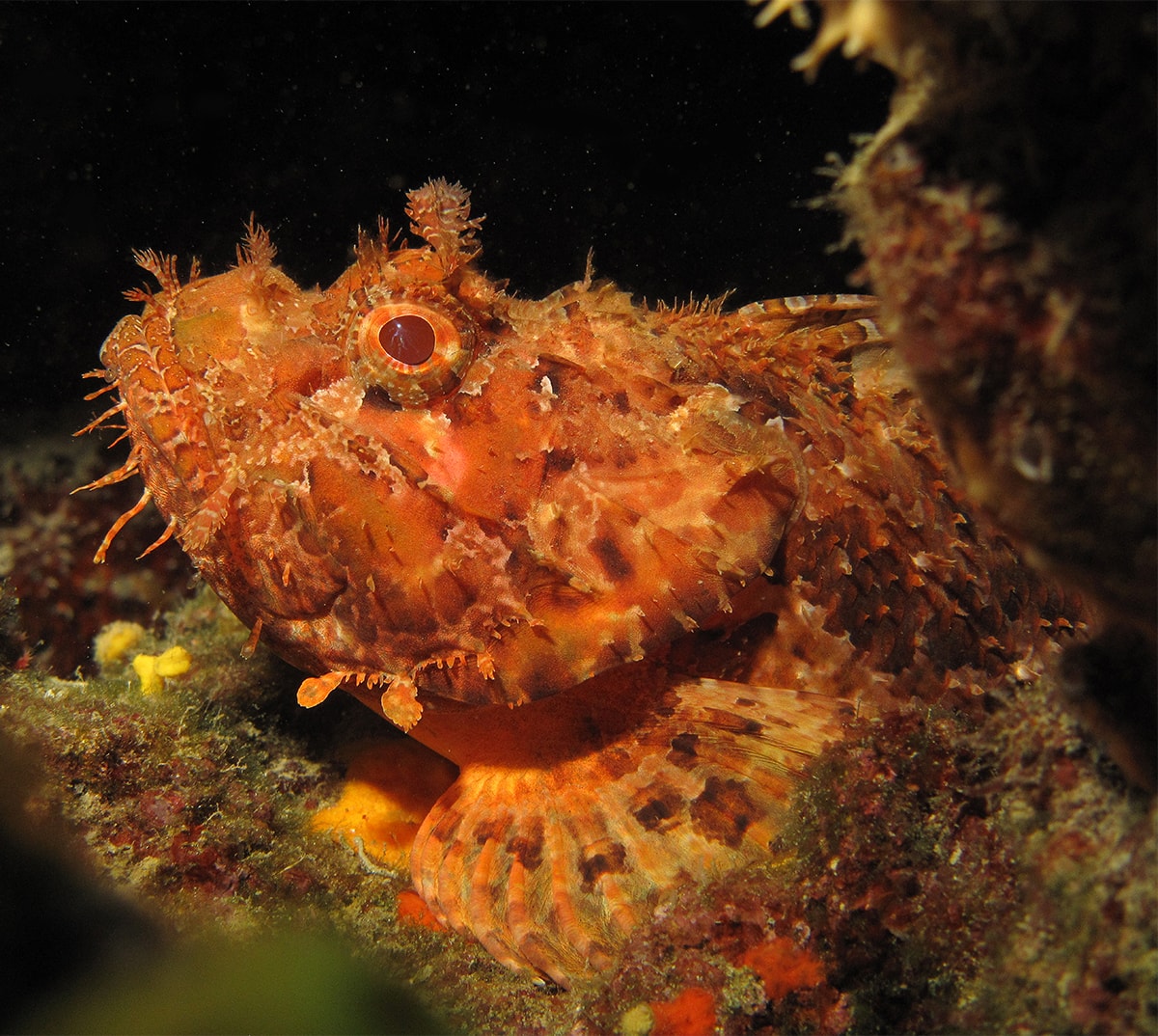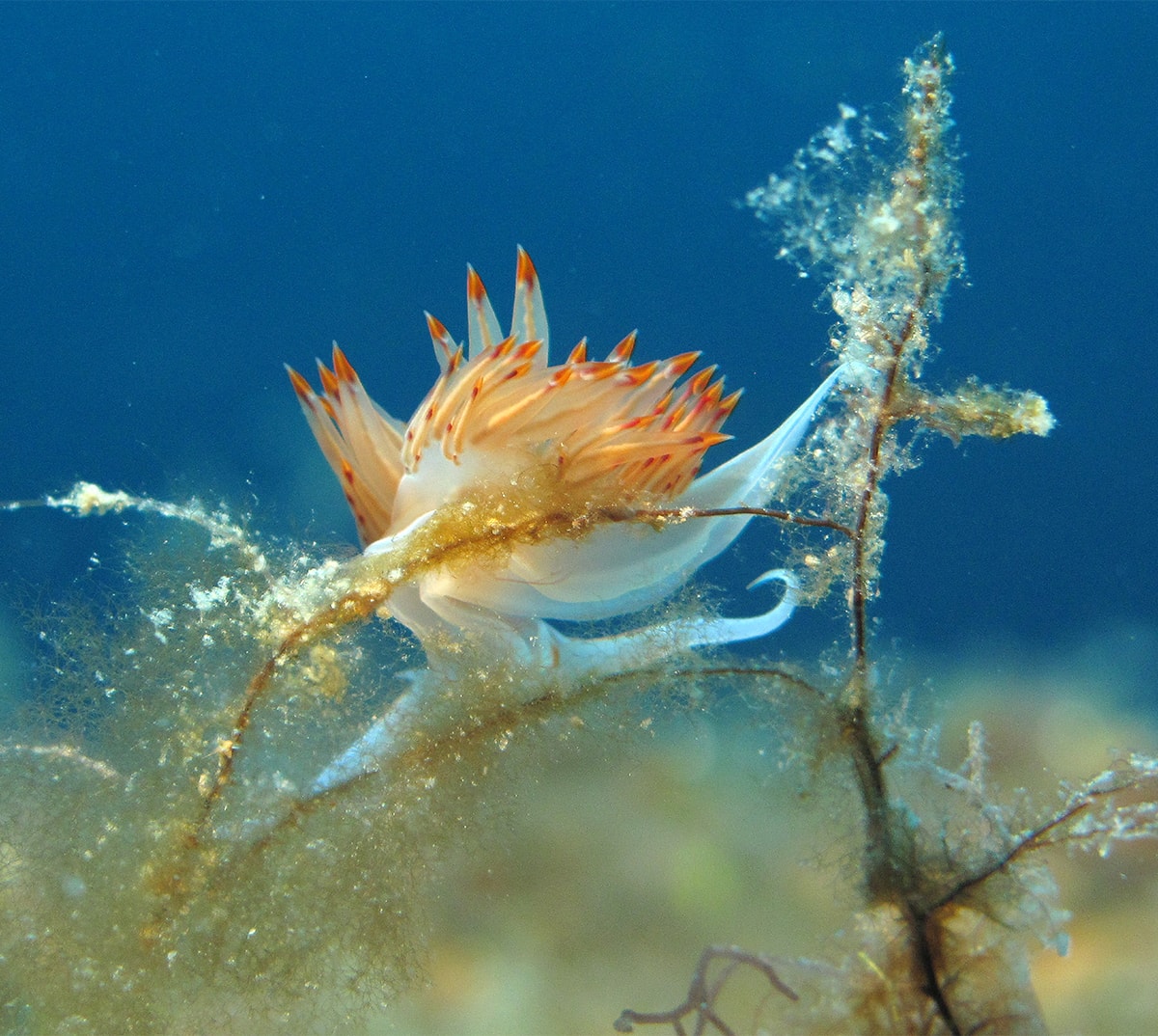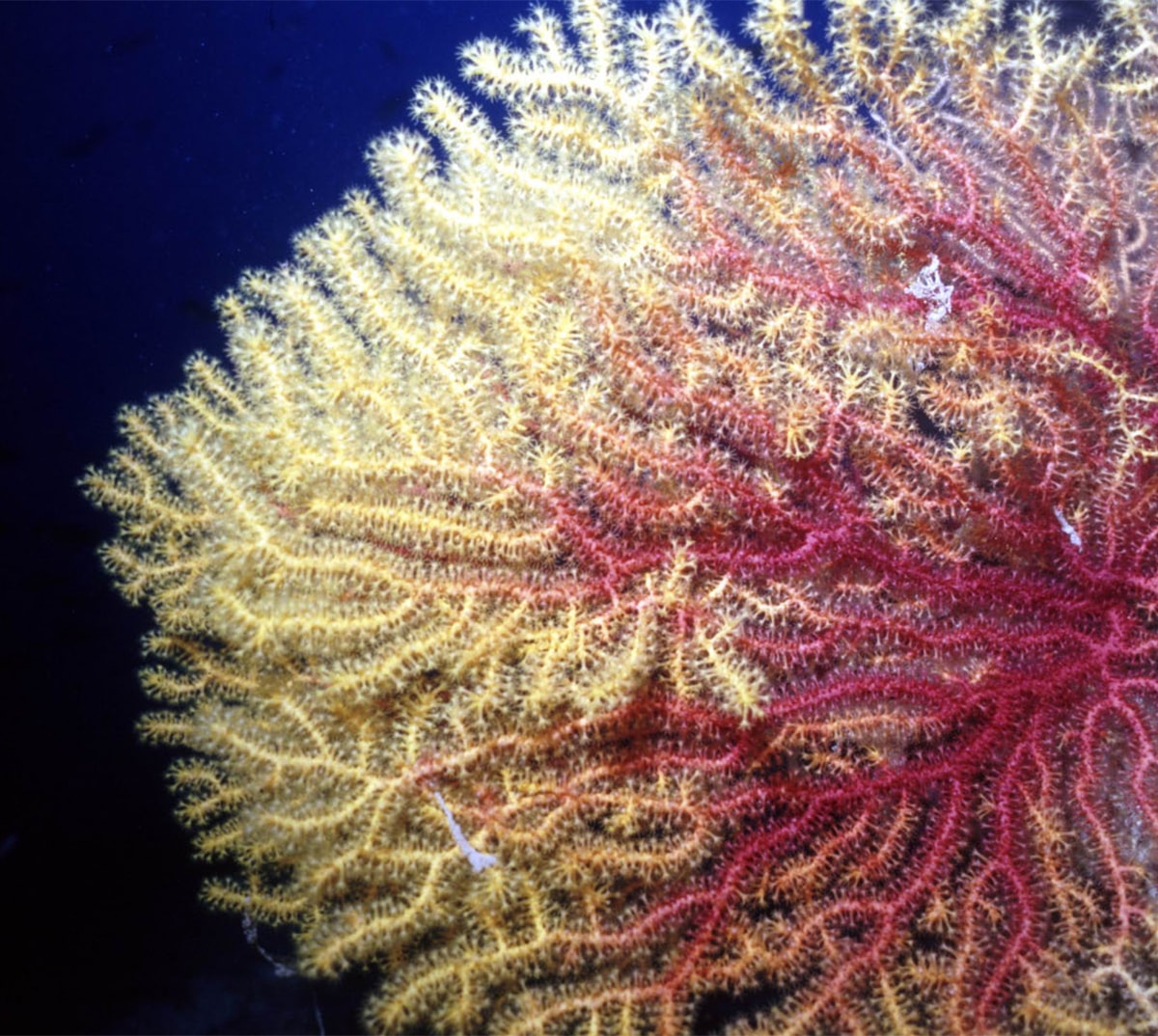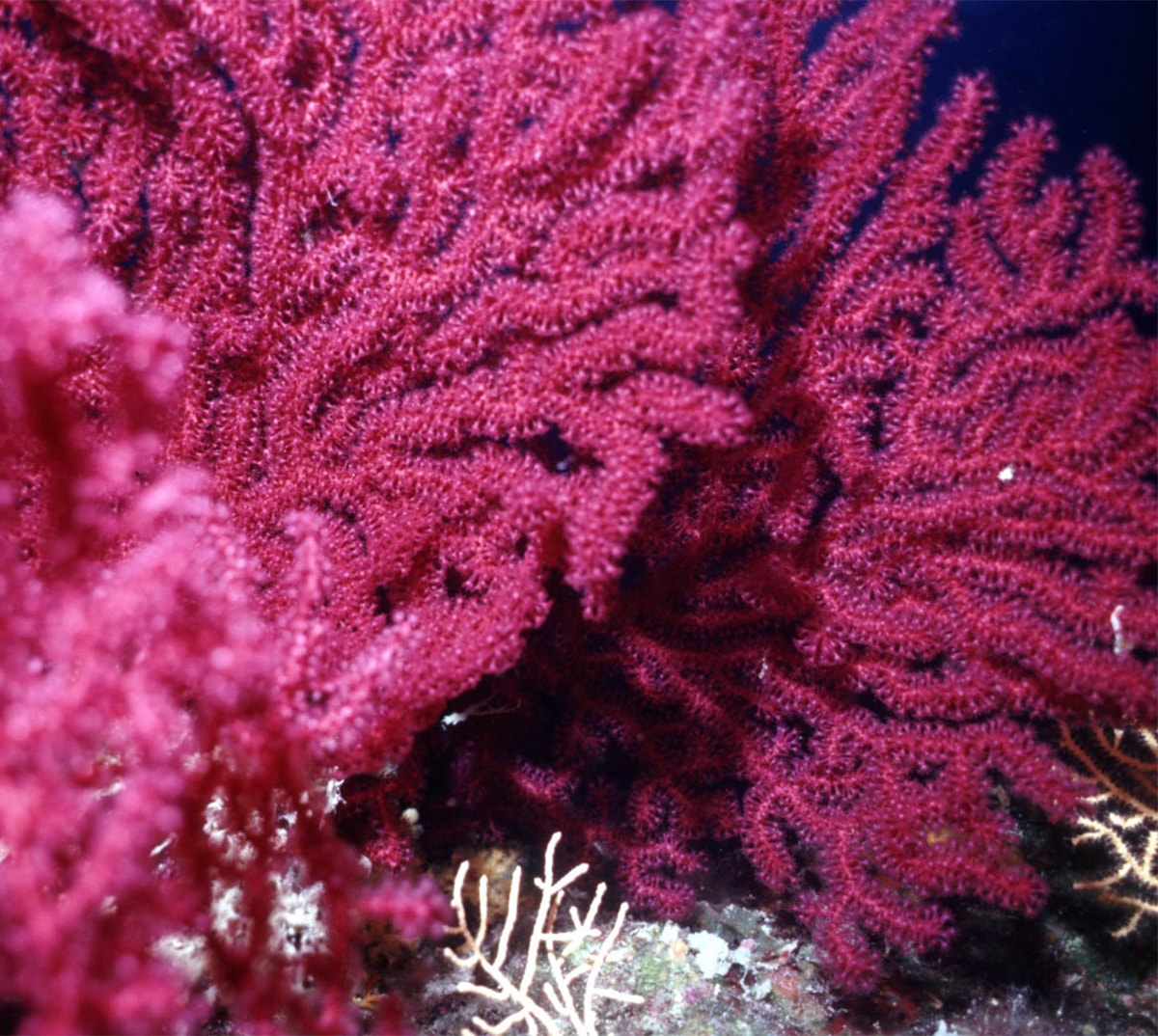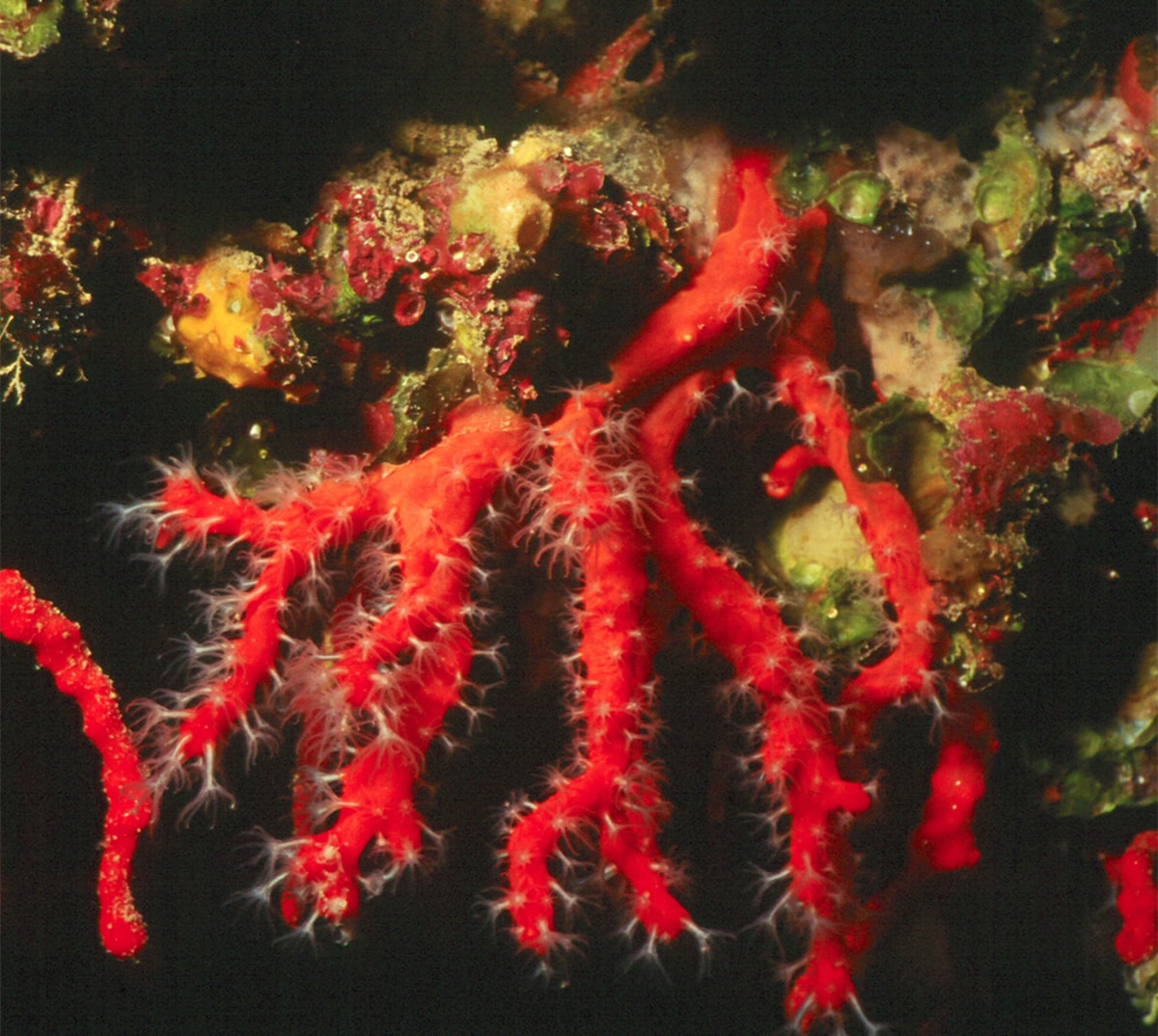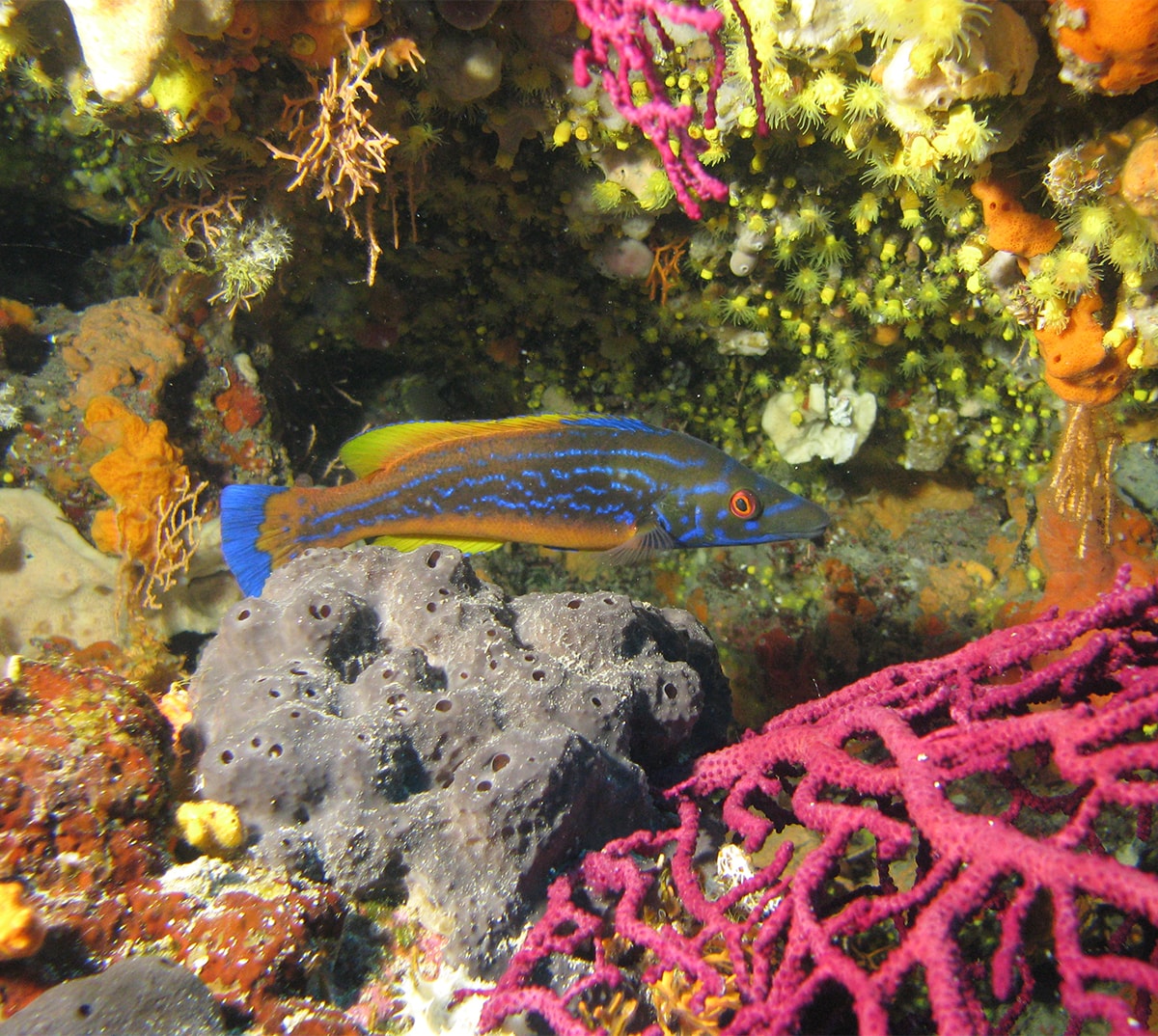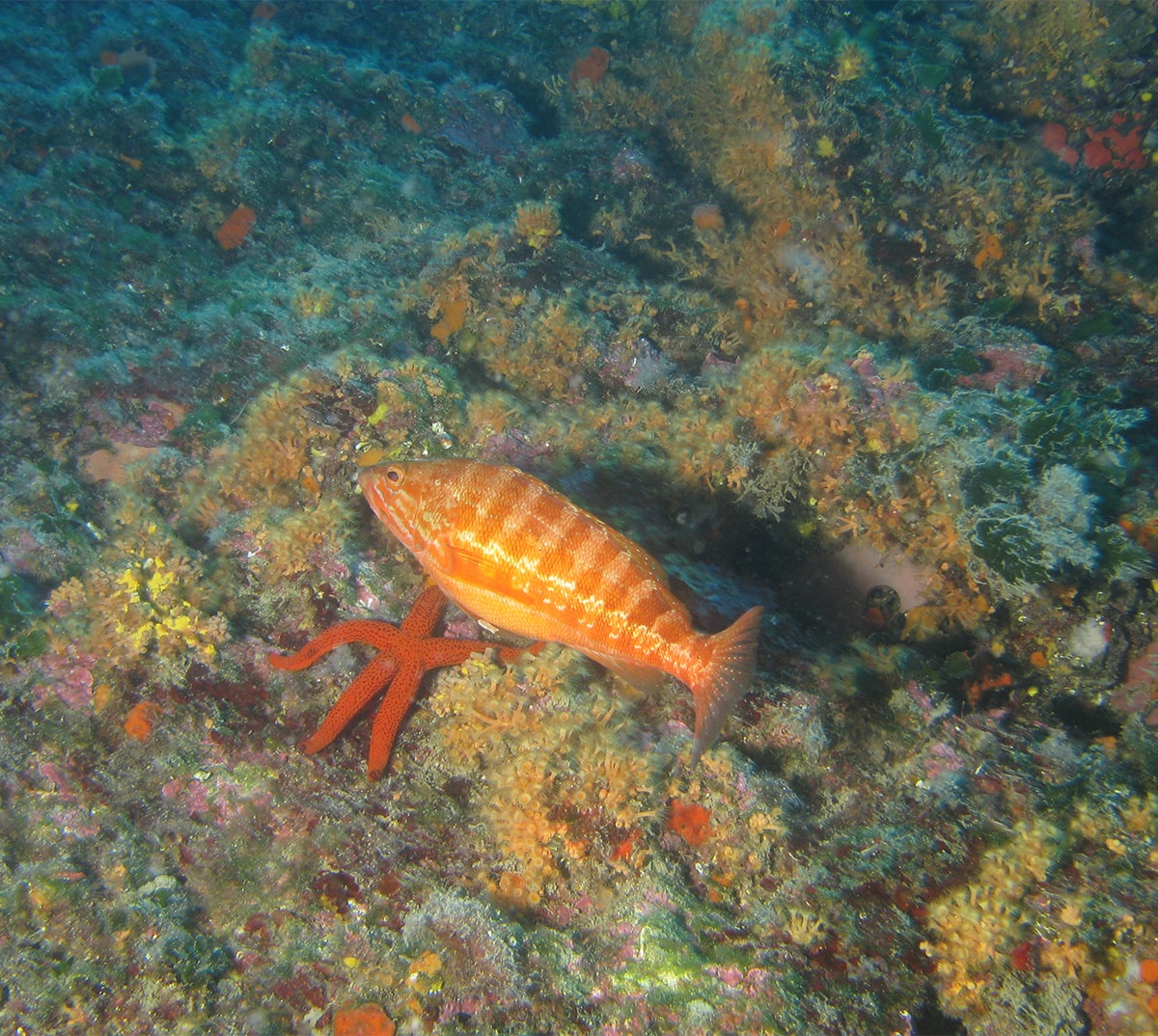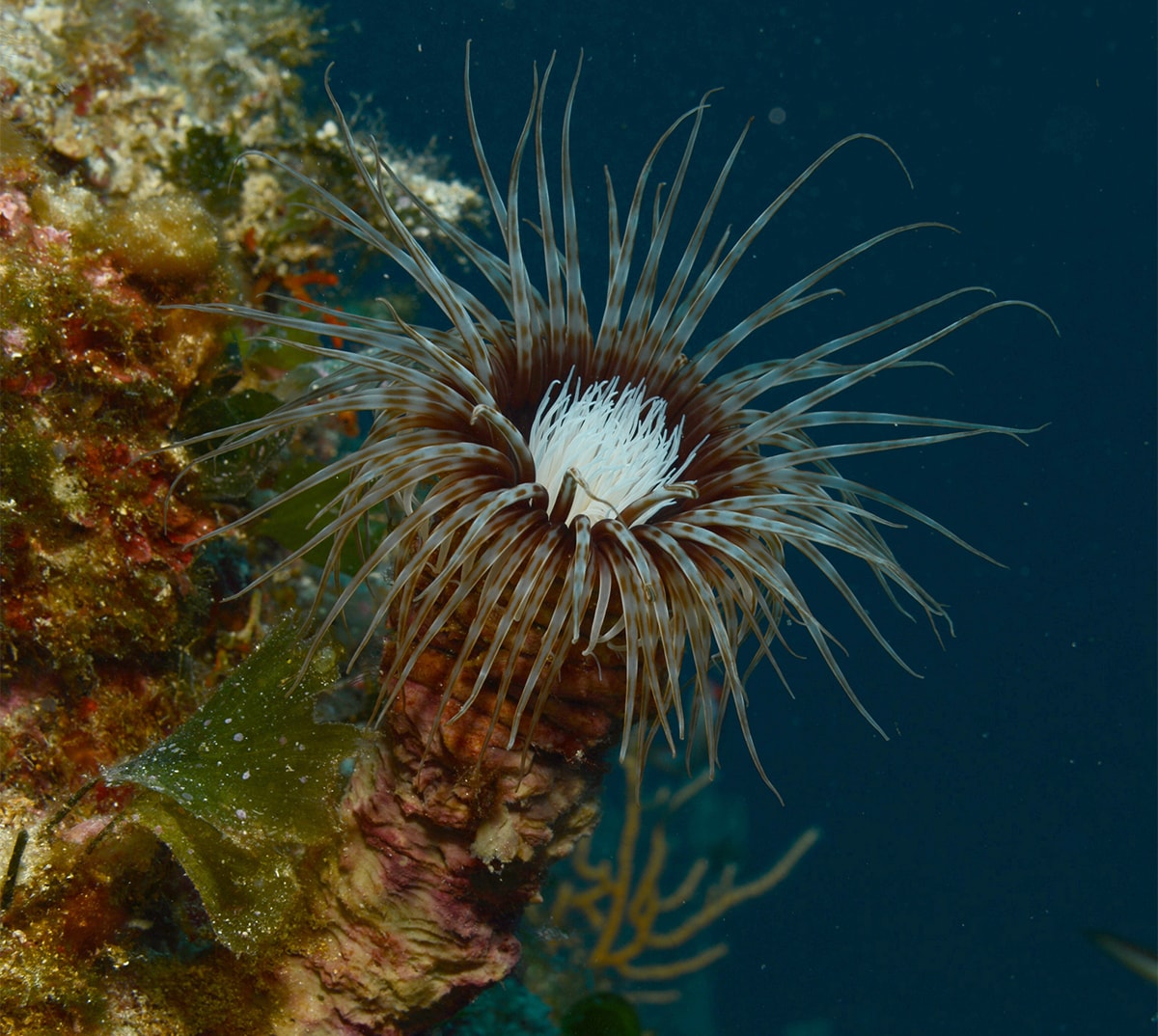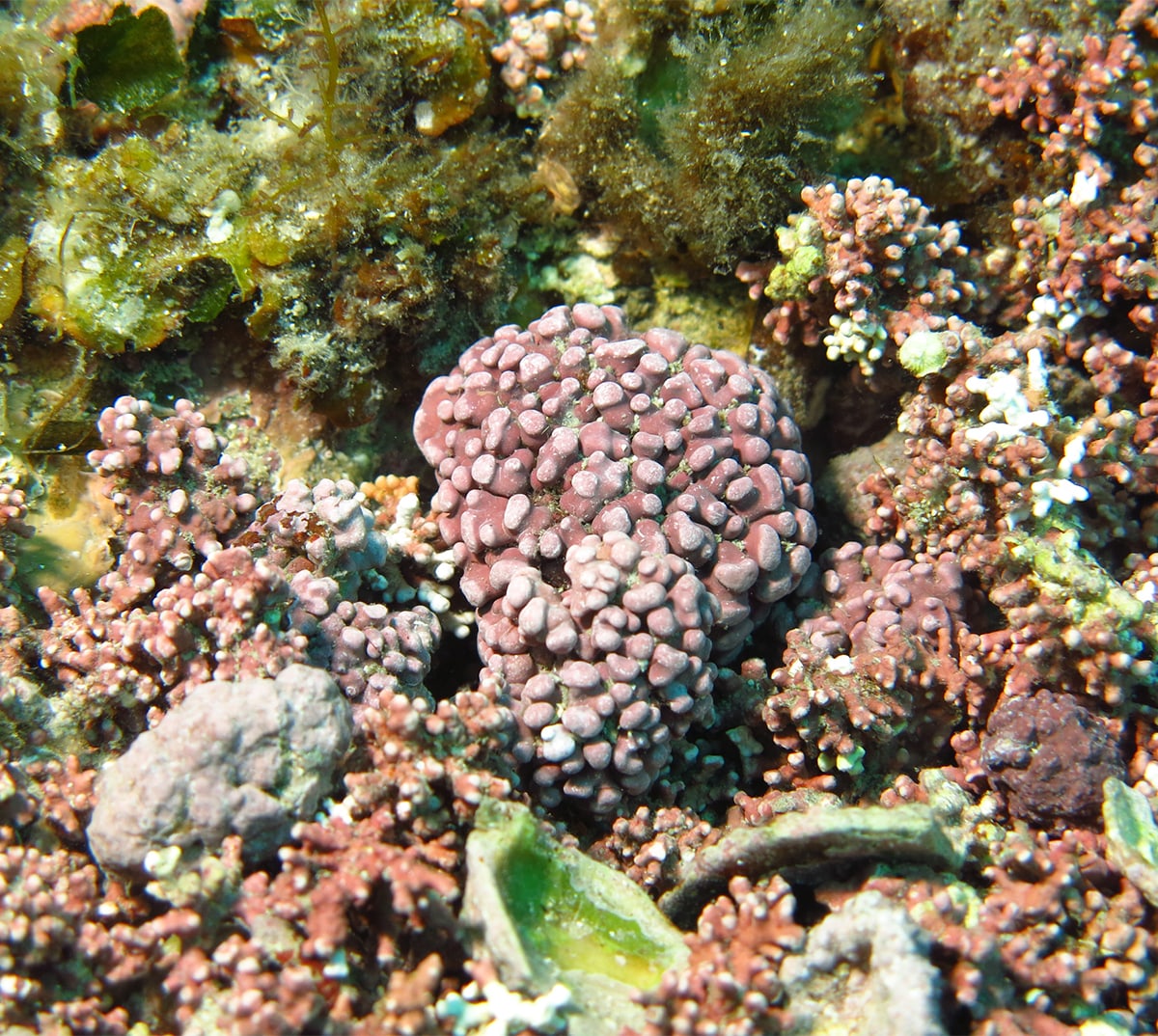Journey through the depths of cliffs
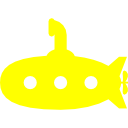
0 - 10 meters
Habitat: Biocenosis of infralittoral algae
Characteristics: severe exposure to sea waves, intertidal zone and intense sunlight zone represent extreme life conditions where only the most resistant life forms can survive.
Species: brown algae - Padina pavonica and Dictyotadichotoma, yellow tube sponge (Aplysina aerophoba)
Fishes: Damselfish (Chromis chromis), common two-banded seabream (Diplodus vulgaris), Mediterranean rainbow wrasse (Coris julis)
Average temperature: 21,3⁰C (October 2011.)
10 - 20 meters
Habitat: Biocenosis of infralittoral algae, appearance of marine flowering plants on the steps of vertical cliffs.
On the “steps” of vertical cliffs: Biocenosis of the marine flowering plant Posidonia oceanica near which it is possible to find the long-snouted seahorse (Hippocampus ramulosus).
Characteristics: lesser exposure to sea waves and the intense sunlight zone represent better conditions for the development of light-loving species.
Common species: Dalmatian Chromodoris Nudibranch (Discodoris atromaculata), the Mediterranean moray (Muraena helena) appears in cliff cracks at these depths. The brown meagre (Sciena umbra) is also connected to cliff cracks. Shoals of fishes such as the saddled seabream can be seen here.
Stony coral (Balanophyllia europaea)
Green algae Acetabularia acetabulum, Codium bursa and Codium vermilara
Average temperature: 21,2⁰C (October 2011)
20 - 30 meters
Habitat: alteration between the biocenosis of infralittoral algae and the coralligenous biocenosis
Characteristics: two habitat types alternate at these depths. The species that love intense sunlight disappear with depth, and coralligenous biocenoses species appear.
Cnidarians: yellow gorgonian (Eucinella cavolini) – 20 to 50 meters
Stony corals: Balanophyllia europaea and Caryophyllia inornata
Sponges: Hexadella racovitzai, Scalarispongia scalaris, Chondrilla nucula, Hemimycale columella, Spongia agaricina, Spirastrella cunctatrix, Petrosia ficiformis and Sarcotragus foetidus.
Average temperature: 21,3⁰C (October 2011)
30 - 40 meters
Habitat: biocenosis with appearance of semi-dark caves
Characteristics: coralligenous biocenosis is a habitat of great biological diversity where many species find their refuge; mostly corals, sponges, coralline algae and moss animals. Cracks of various sizes also appear on the cliffs, which are inhabited by the species of semi-dark caves biocenosis.
Species: yellow gorgonian (Eucinella cavolini)
Species of semi-dark caves: Stony corals (Hoplangia durothrix, Leptopsammiapruvoti and Madracis pharensis), sponges (Aplysina cavernicola) and moss animals.
Fishes: The red scorpionfish (Scropaena scrofa) inhabits the cliff cracks
Average temperature: 22,1⁰C (October 2011)
40 - 50 meters
Habitat: Coralligenous biocenosis
Characteristics: if we go deeper the species slowly alternate and red gorgonians take their place in the colour spectra from yellow to deep purple. Red gorgonians prefer deeper seas where the currents are strong.
Along with the yellow gorgonian, the species which begins to appear is: The violescent sea-whip (Paramunicea clavata) - (at 40 to 60 m)
Crustaceans: spiny lobster (Palinurus elephas) - in stone cracks on vertical cliffs.
50 - 60 meters
Habitat: coralligenous biocenosis with steps where sandy – shell sea bottoms appear sporadically
Characteristics: vertical rocky bed is an ideal place for the red coral which prefers dark habitats without the sediment.
Appearance of species: the red coral (Corallium rubrum) on vertical rock.
Fishes: Comber (Serranus cabrilla) and Cuckoo wrasse (Labrus bimaculatus) – inhabits the steps on sandy – shell sea bottoms (with no red coral).



